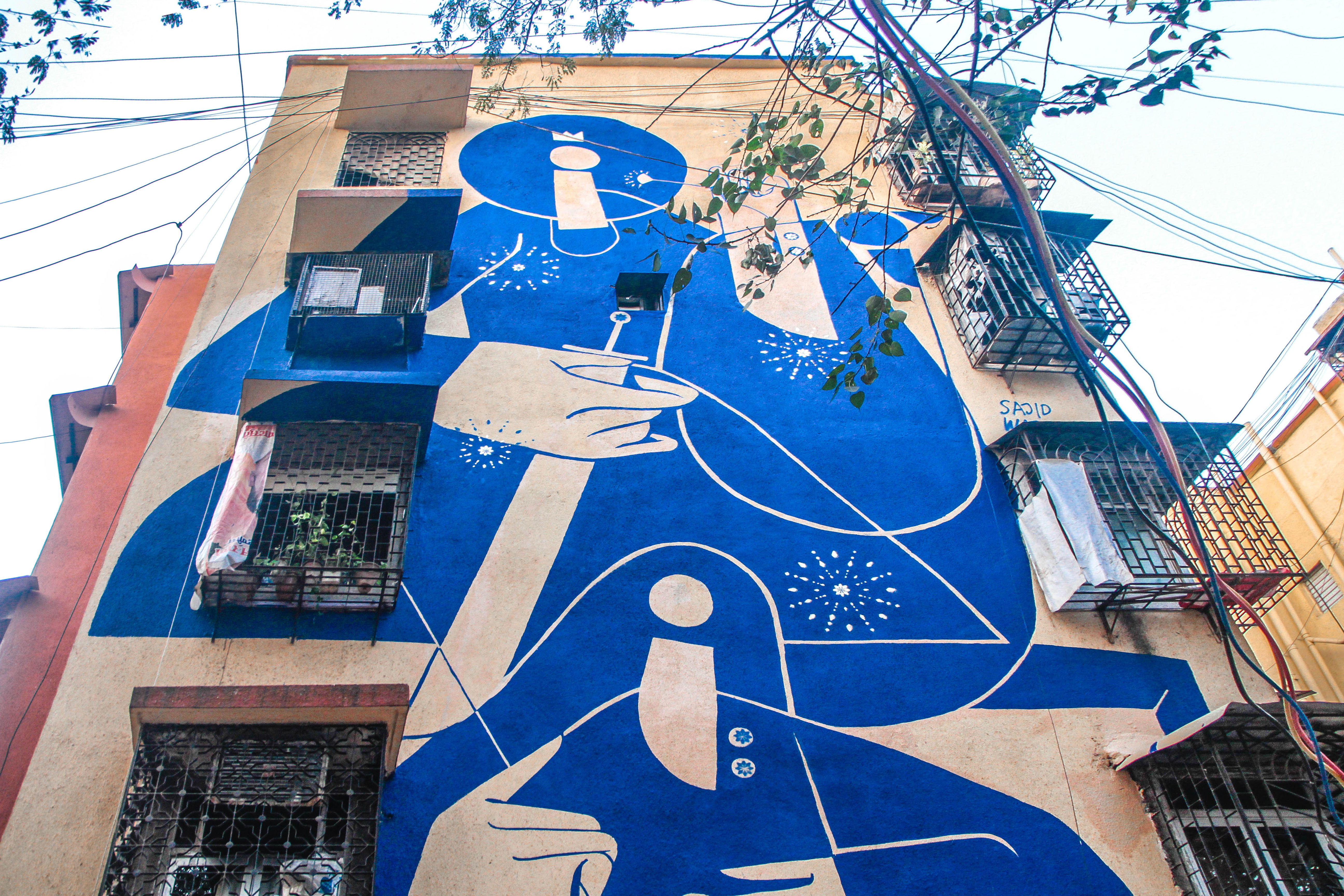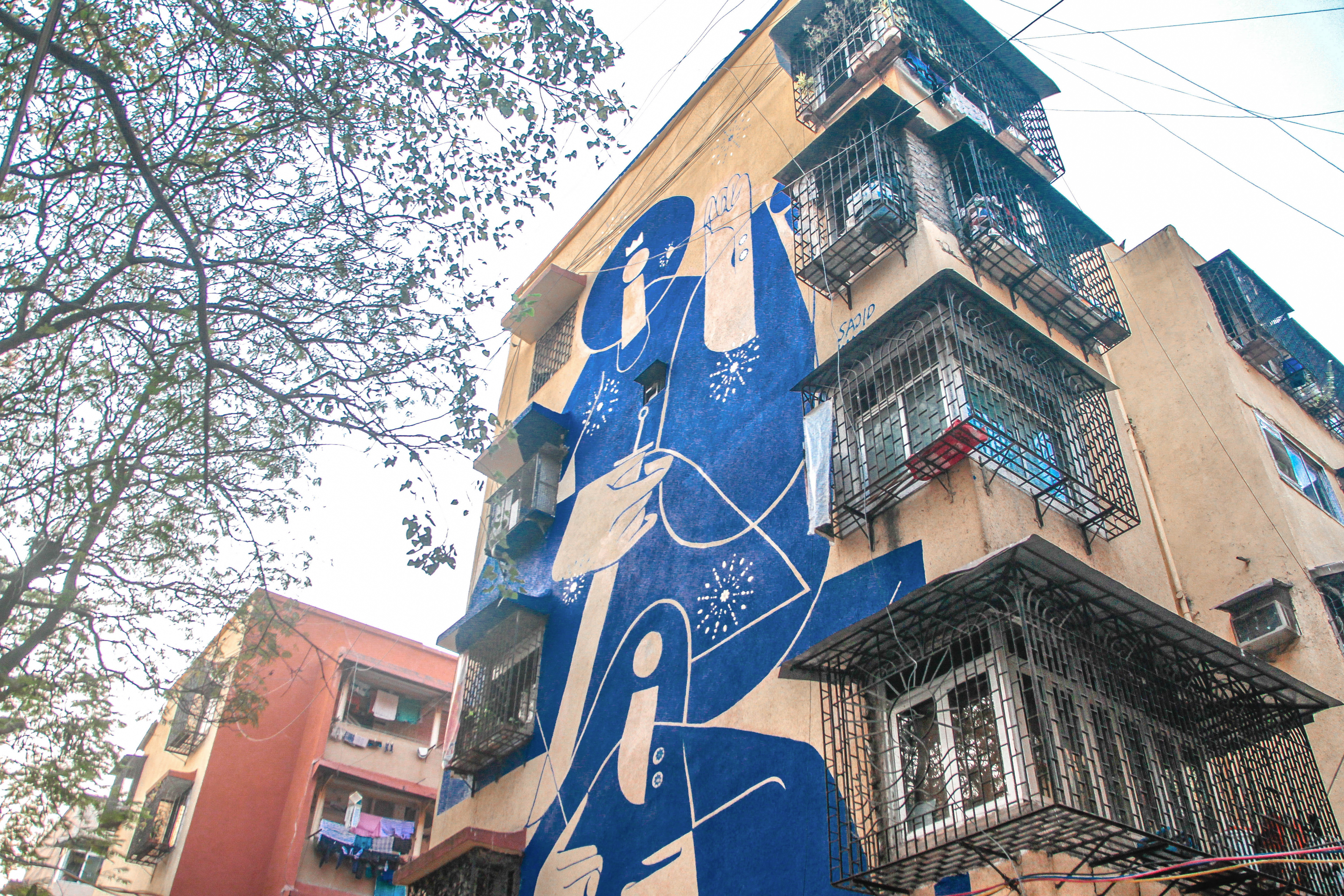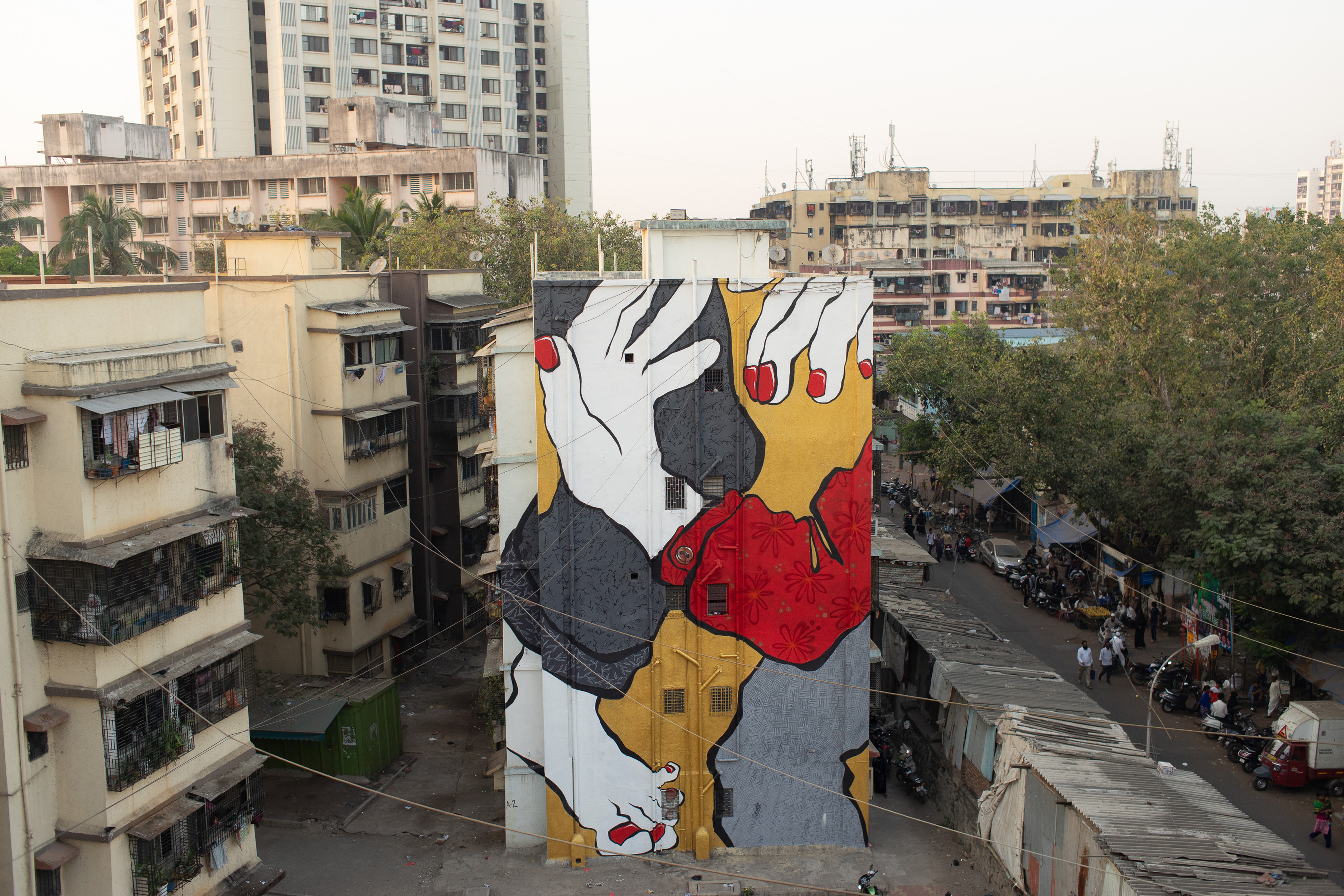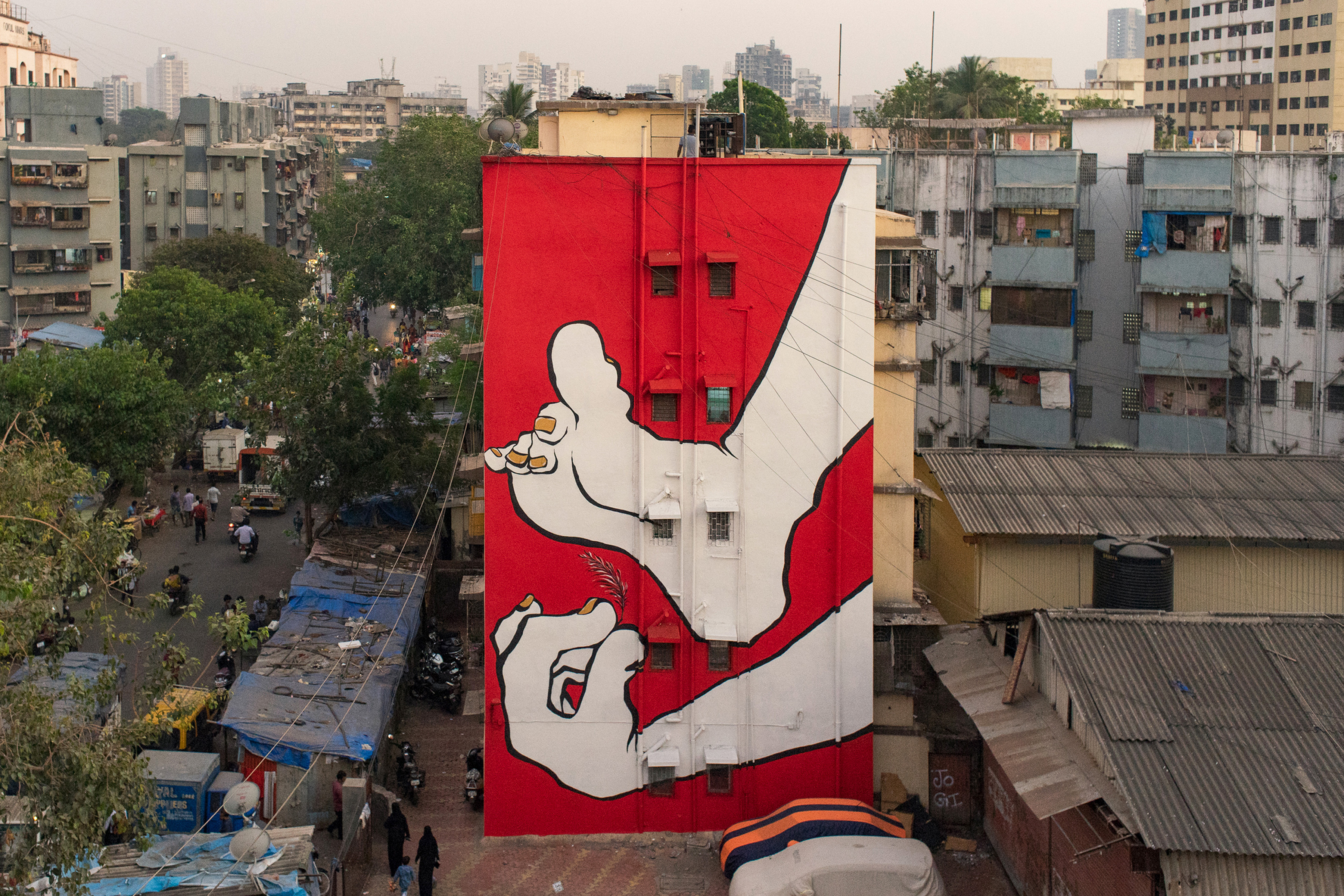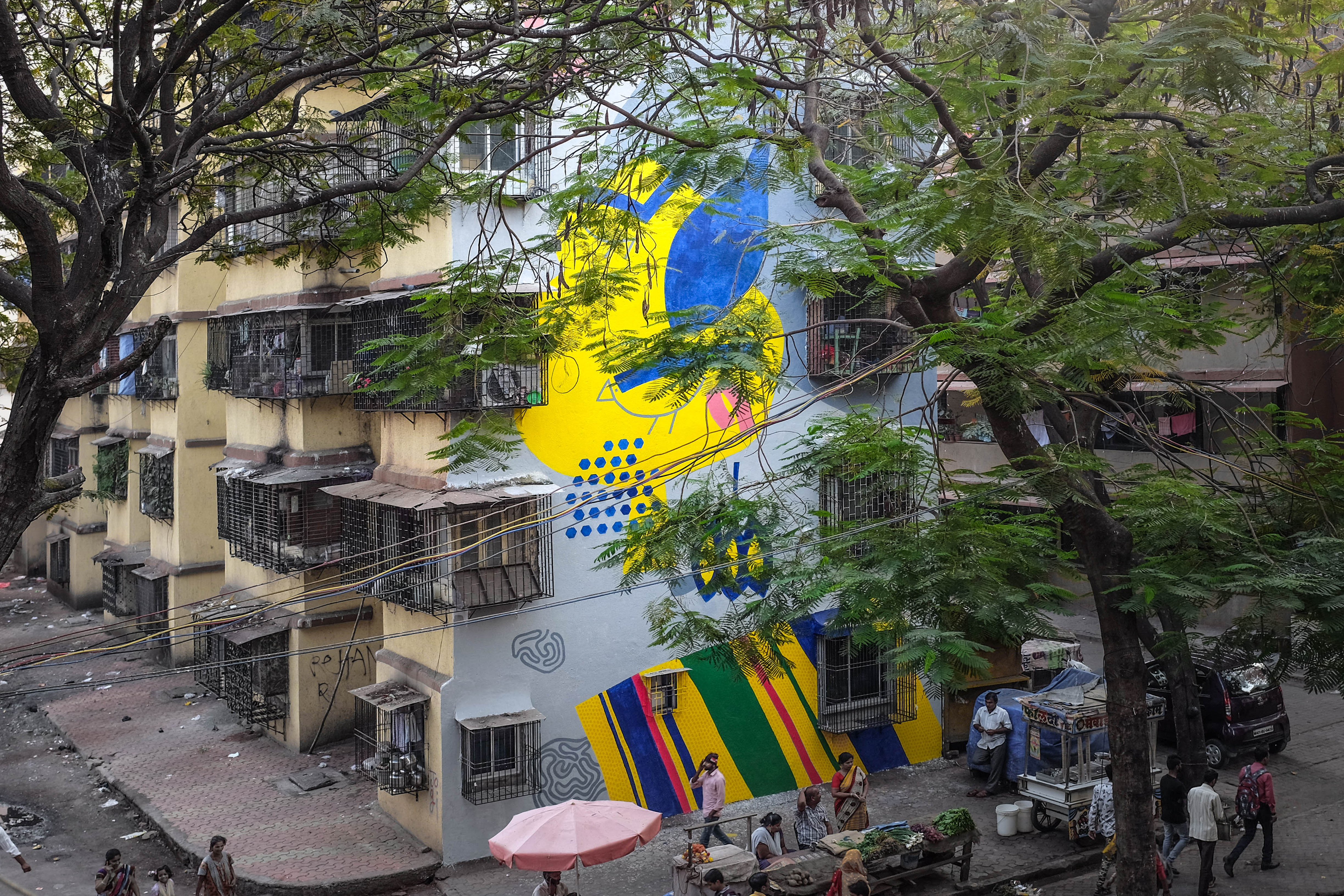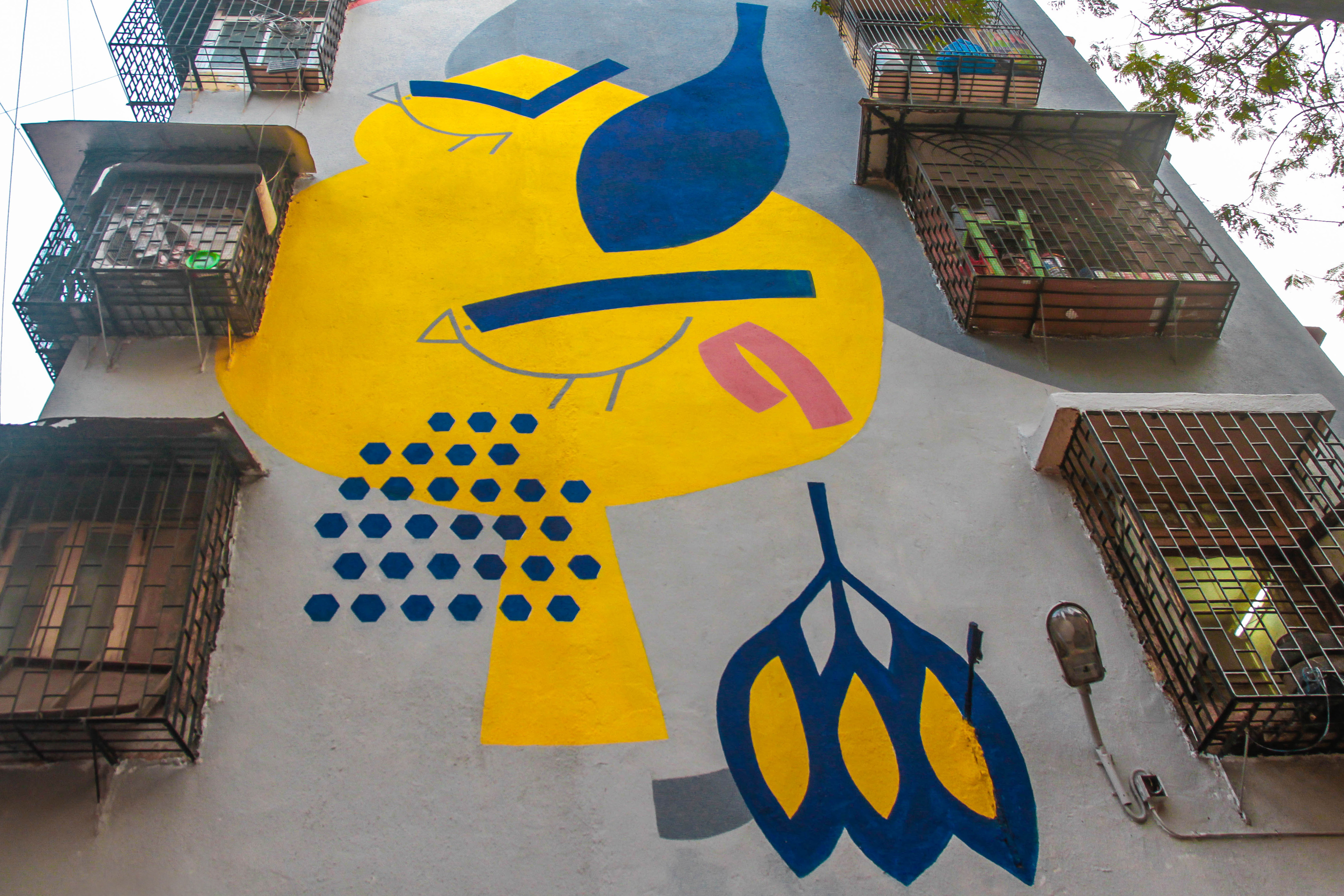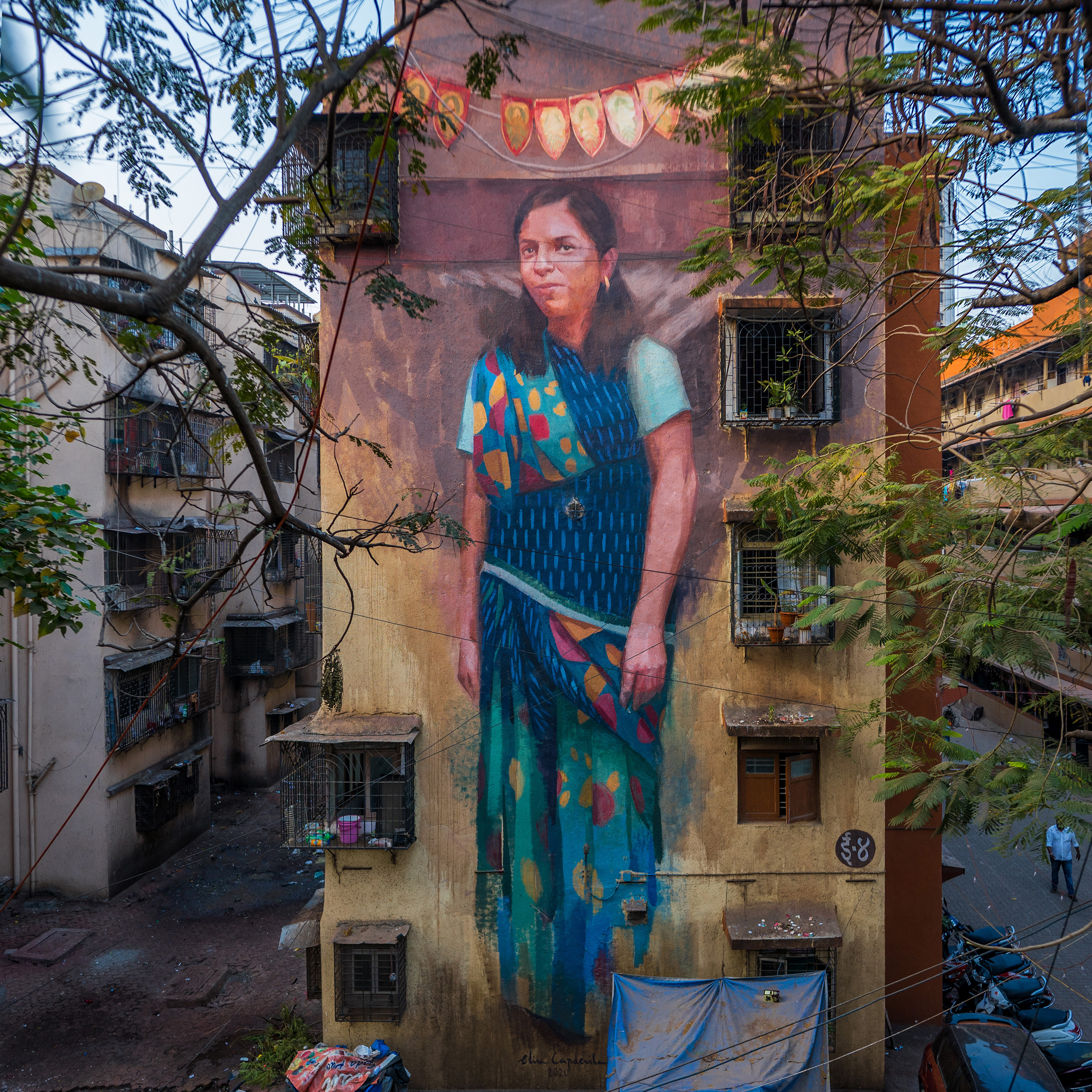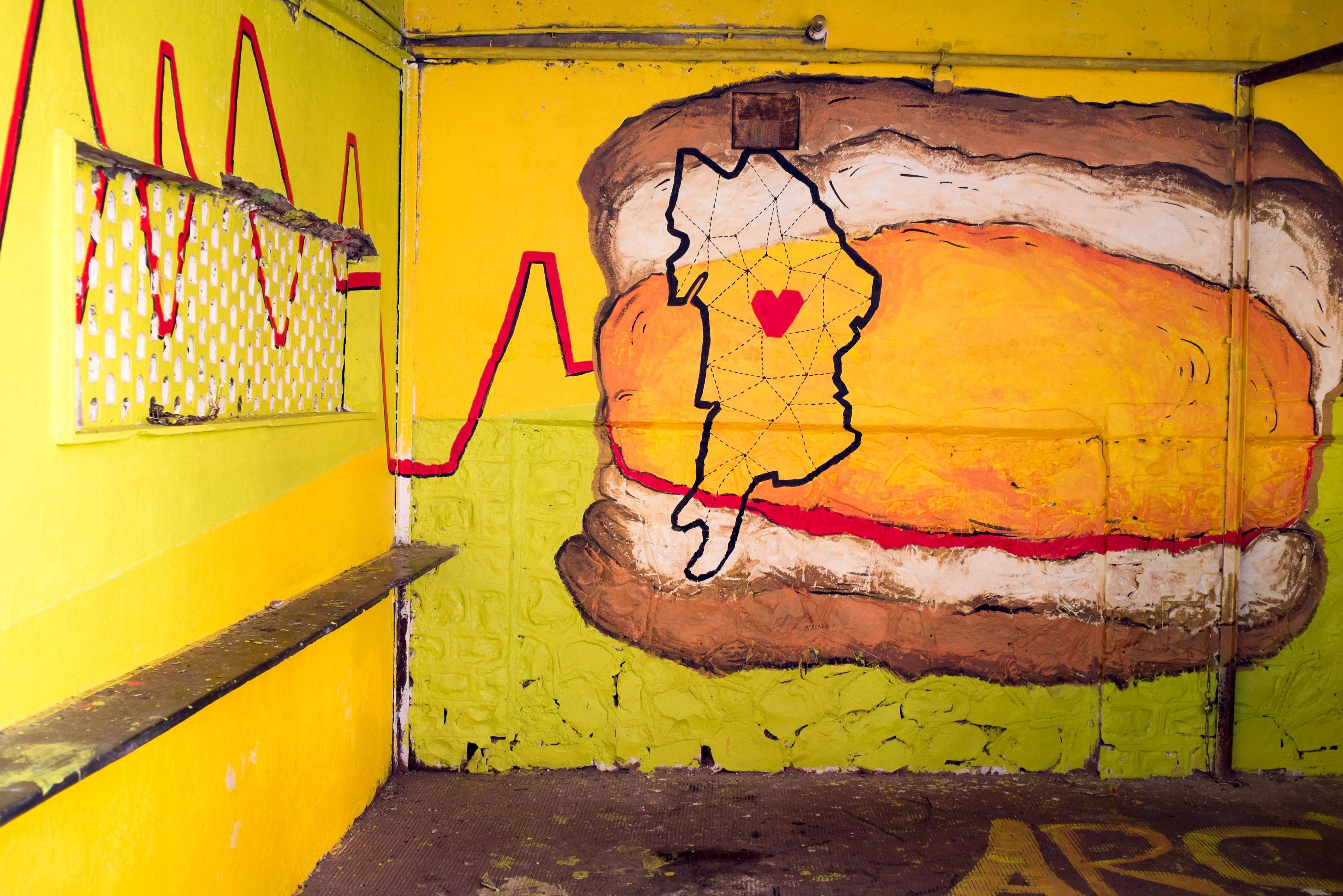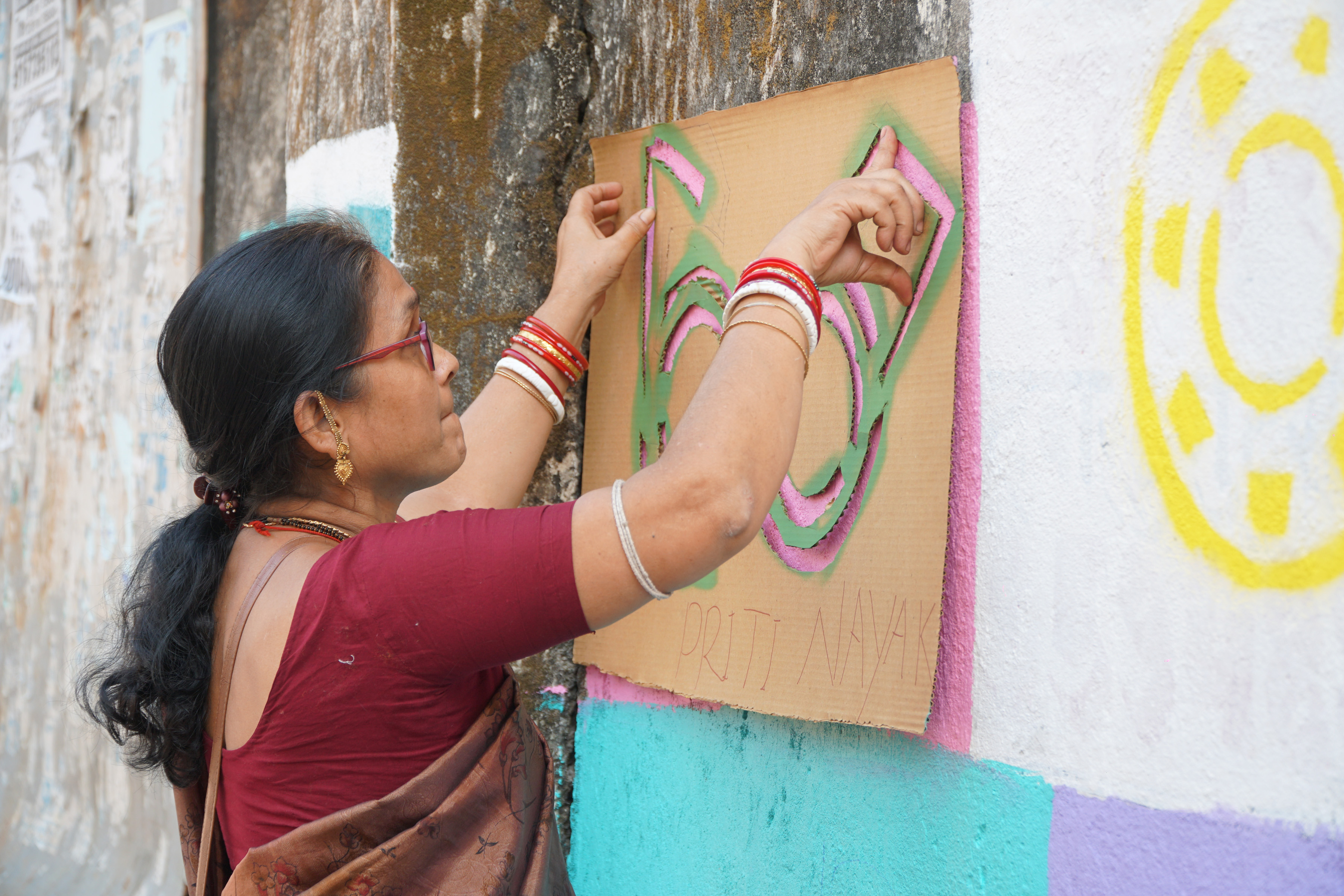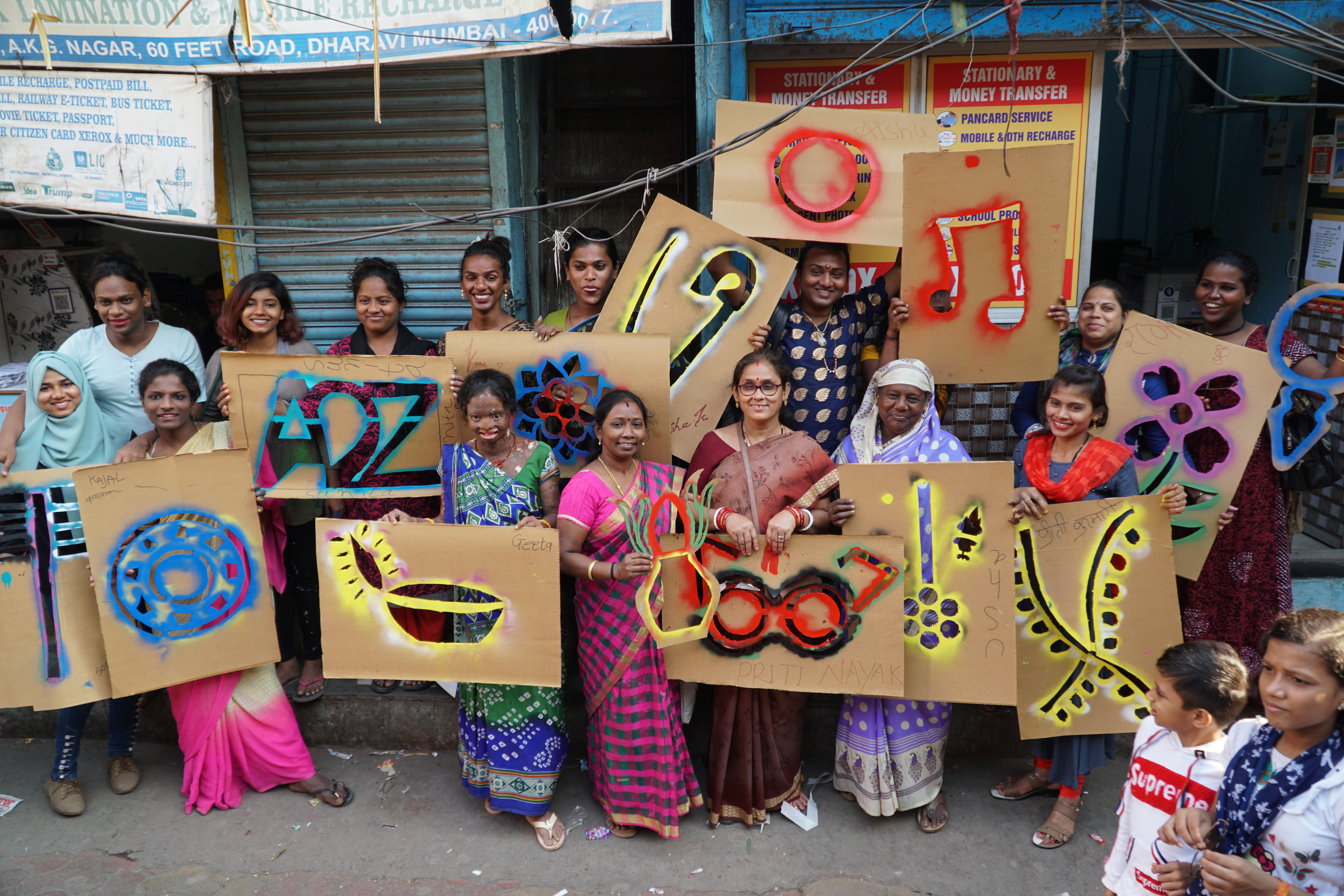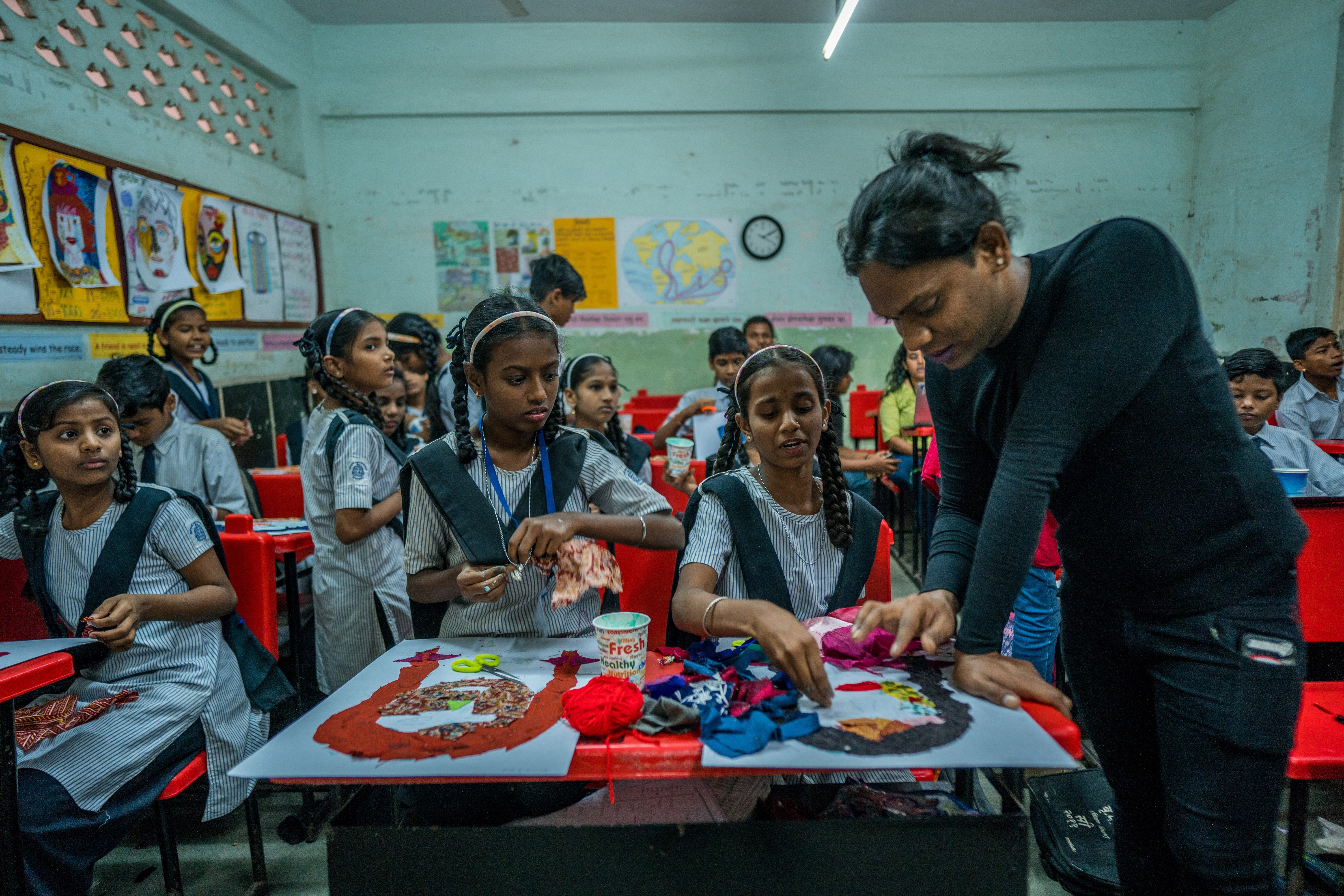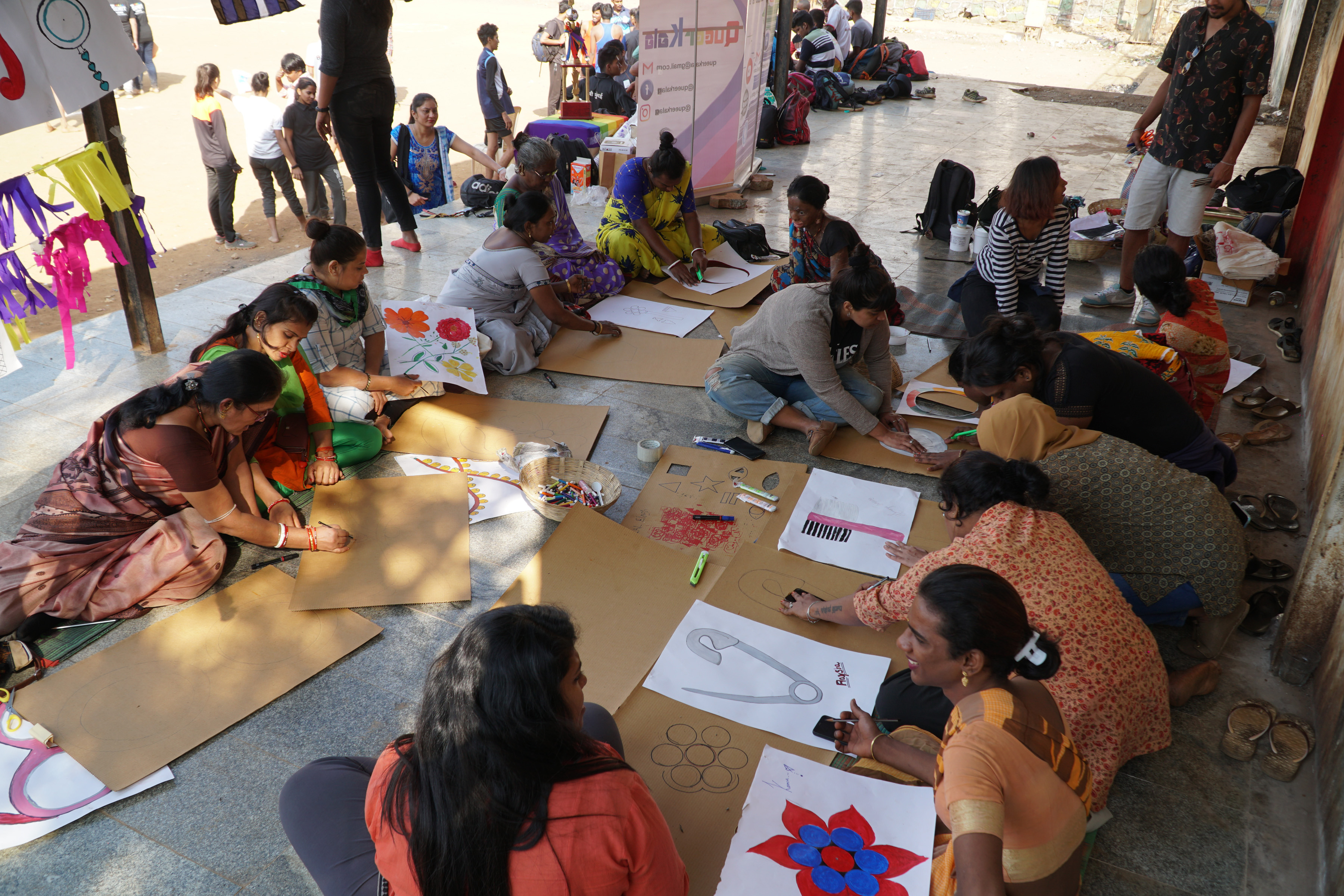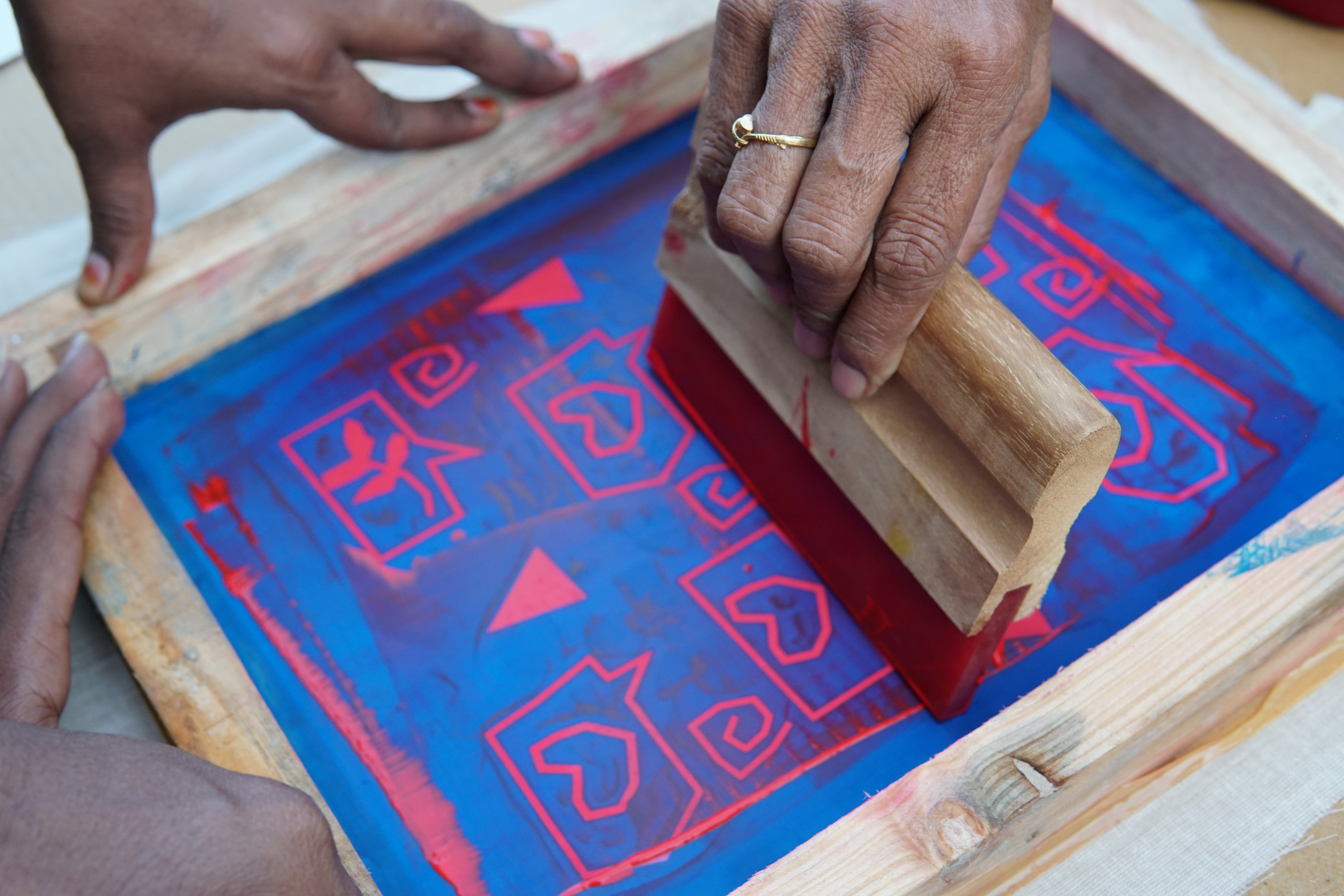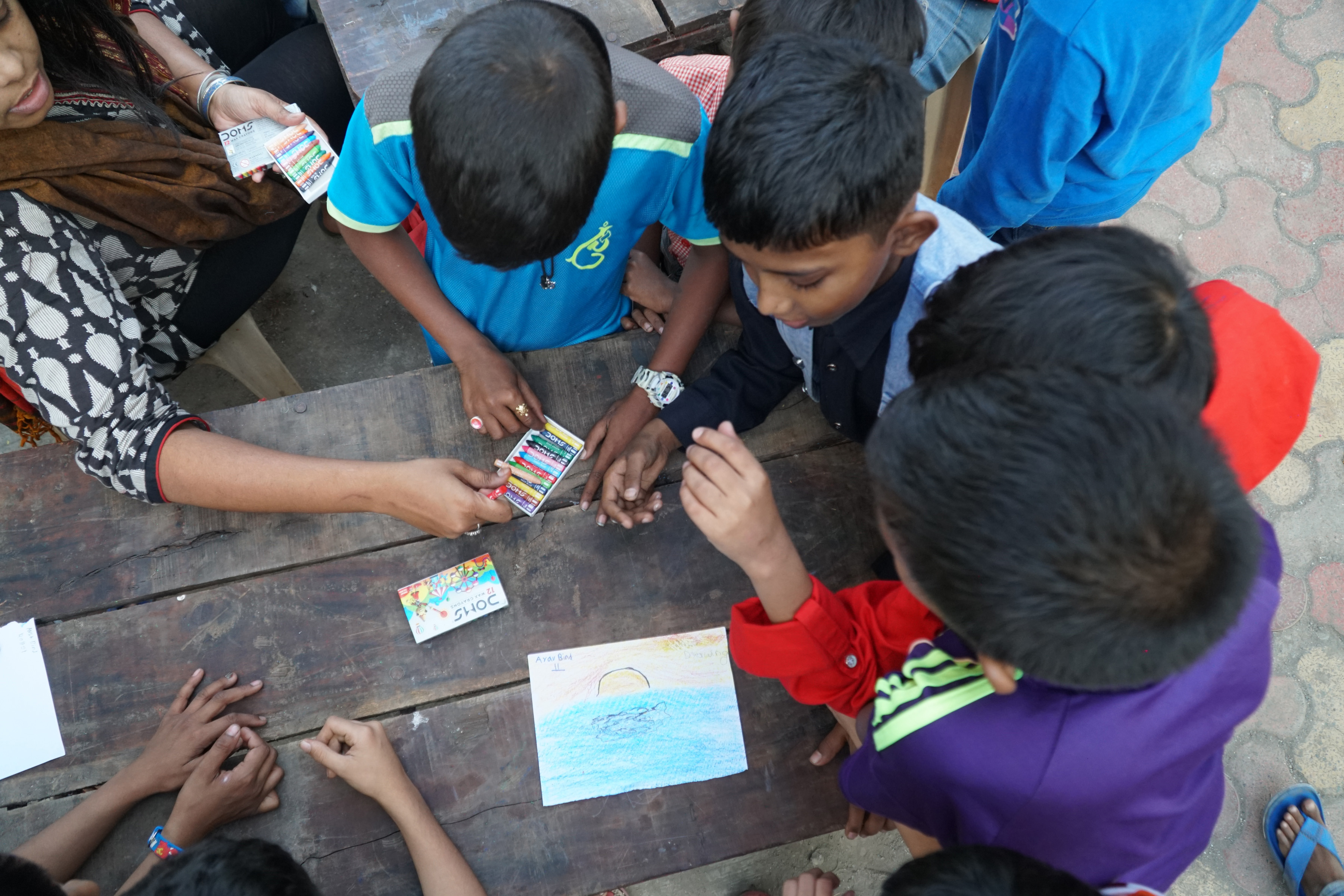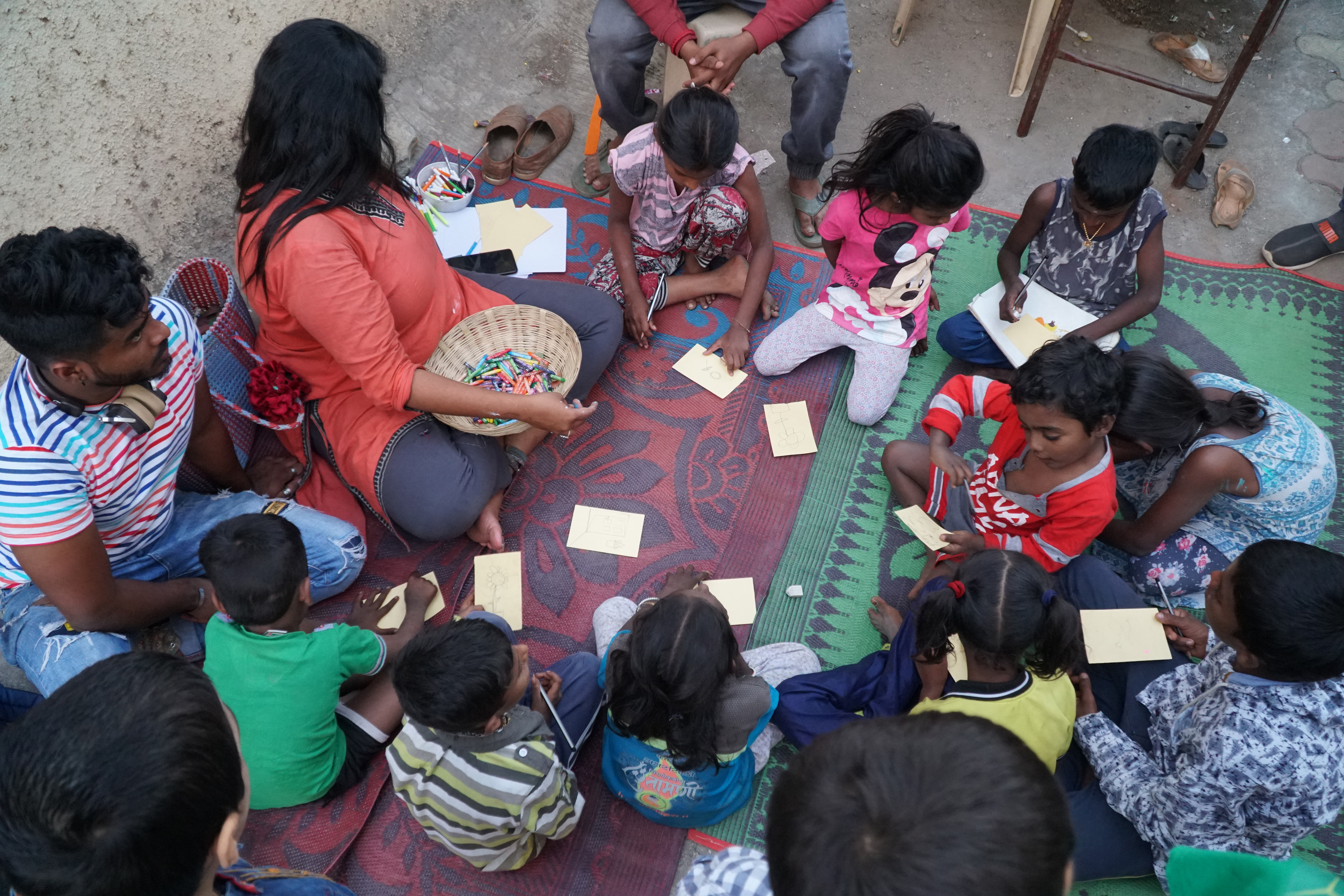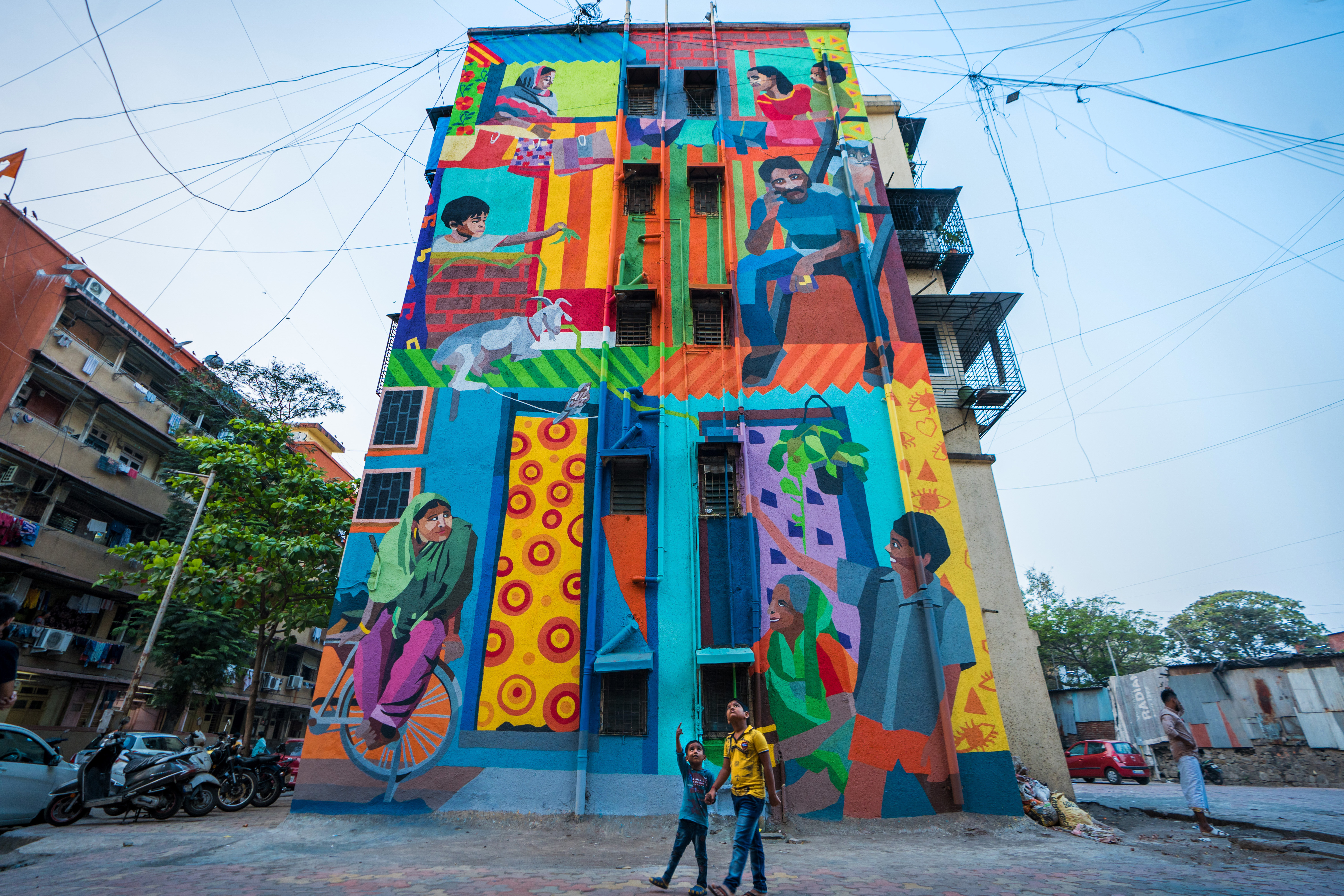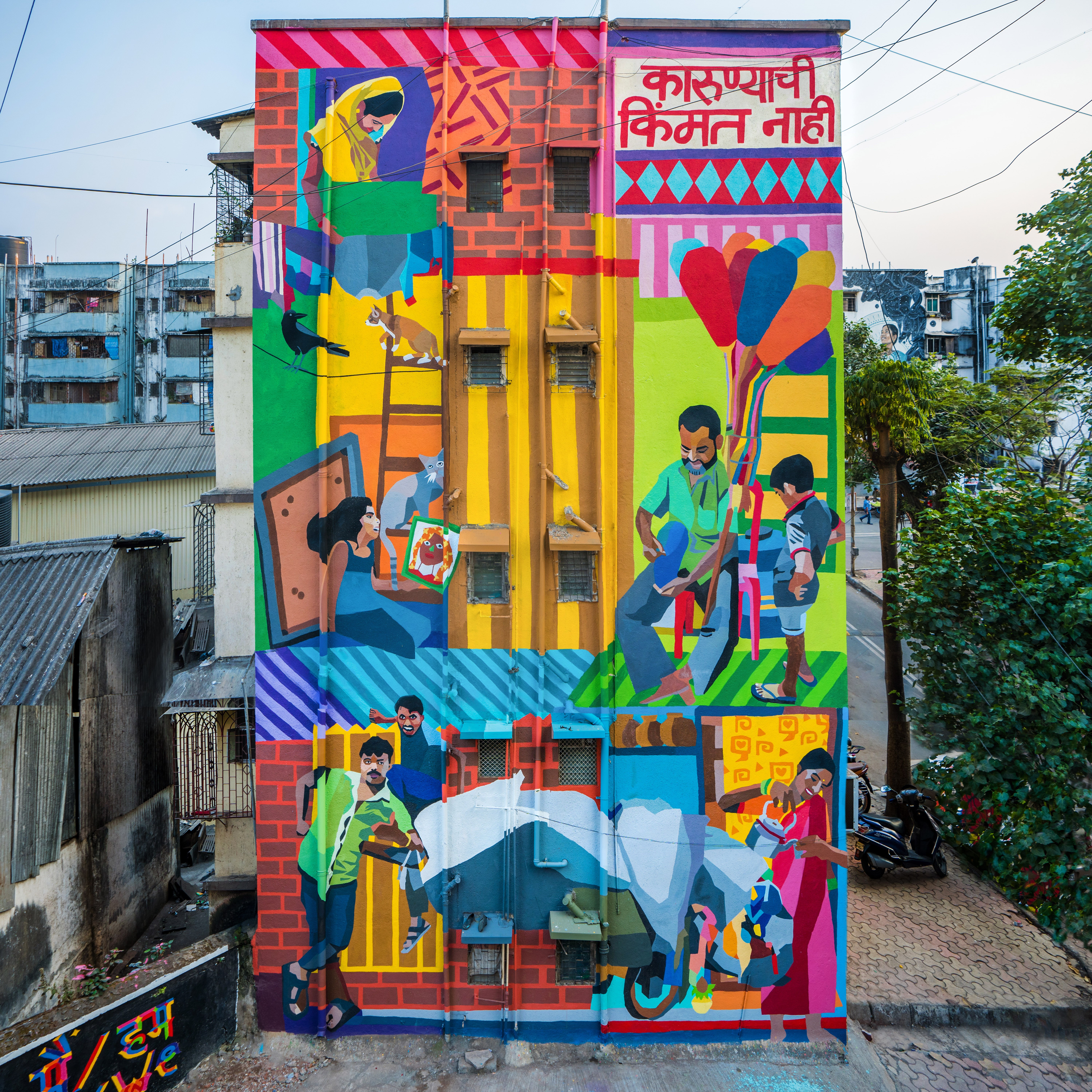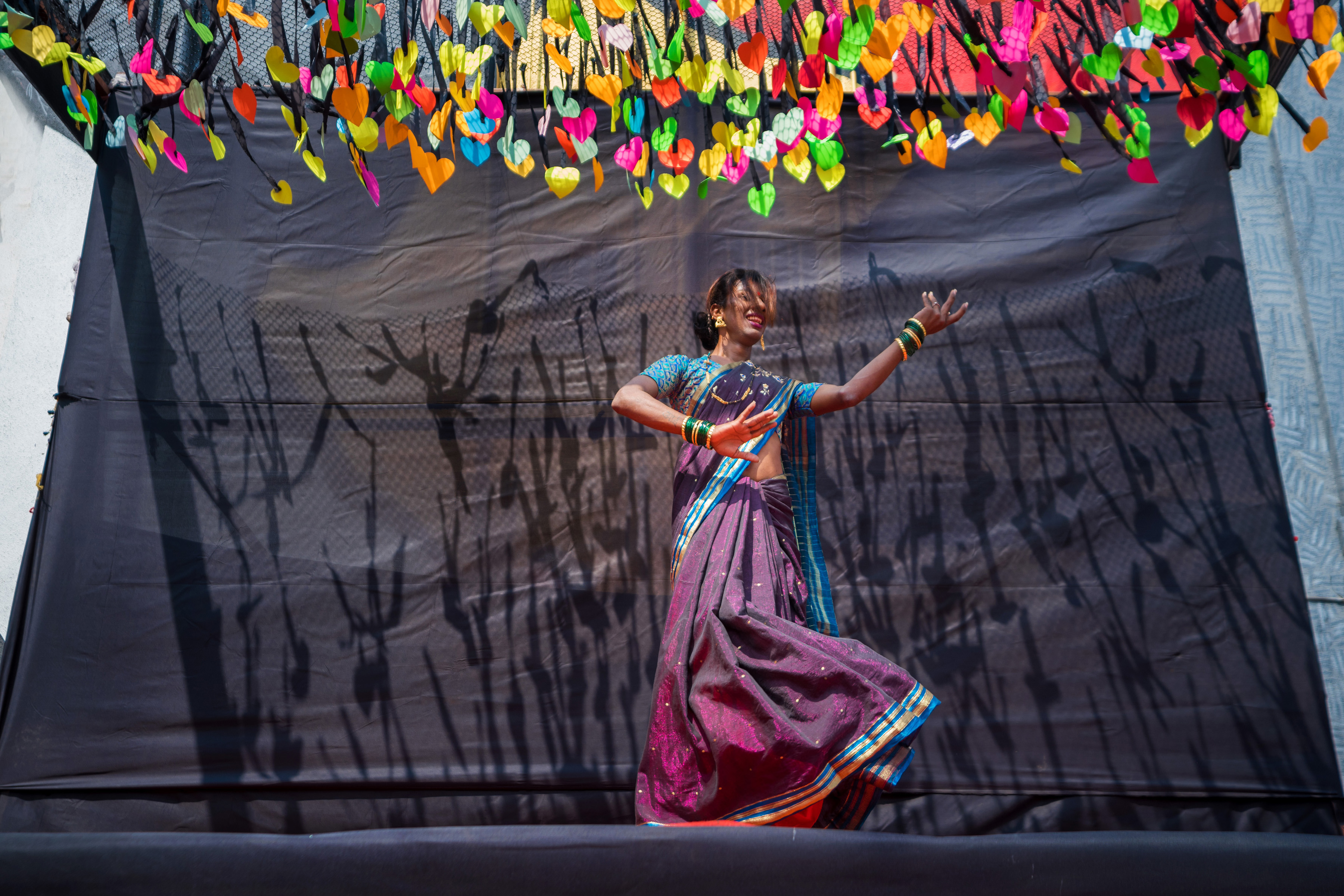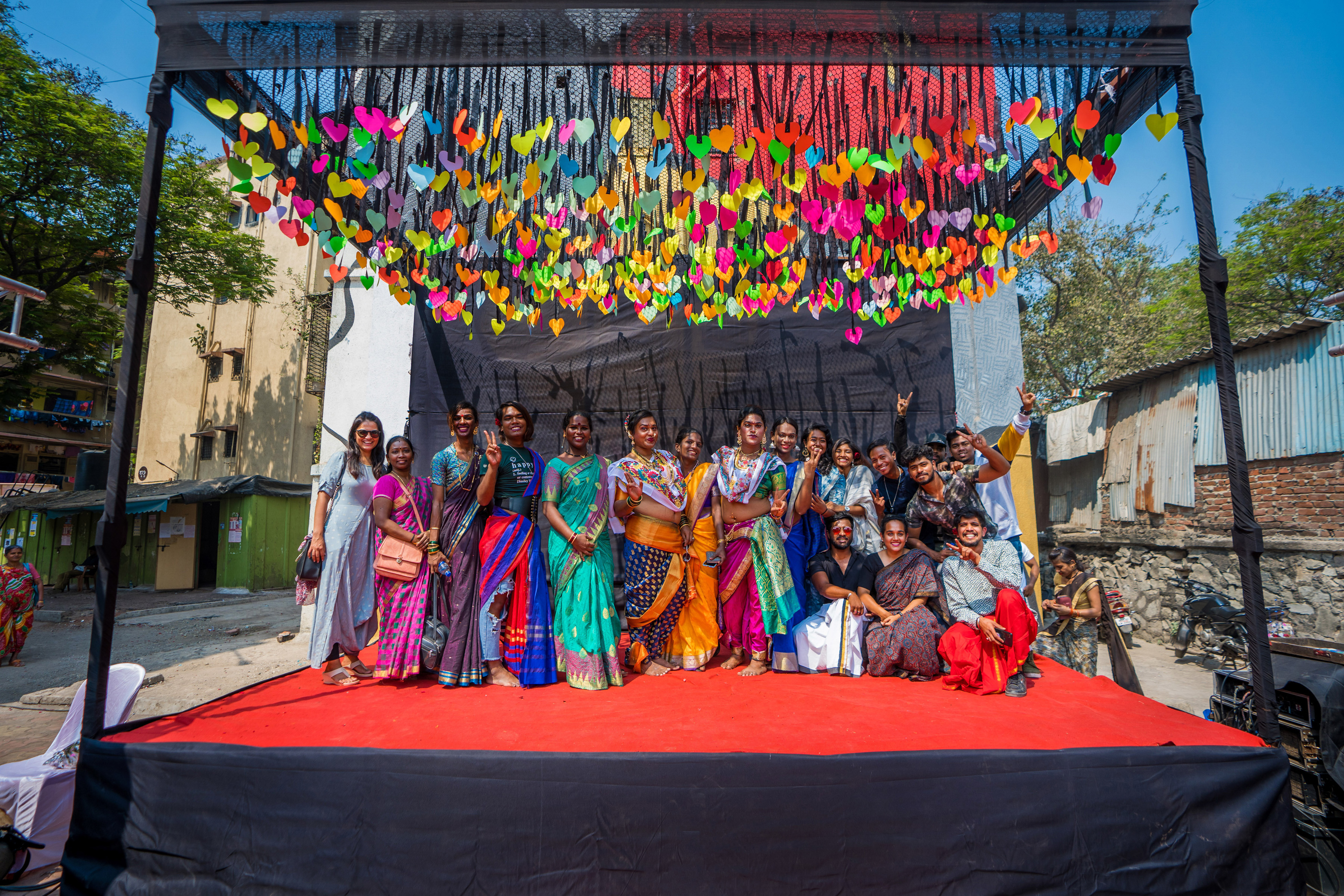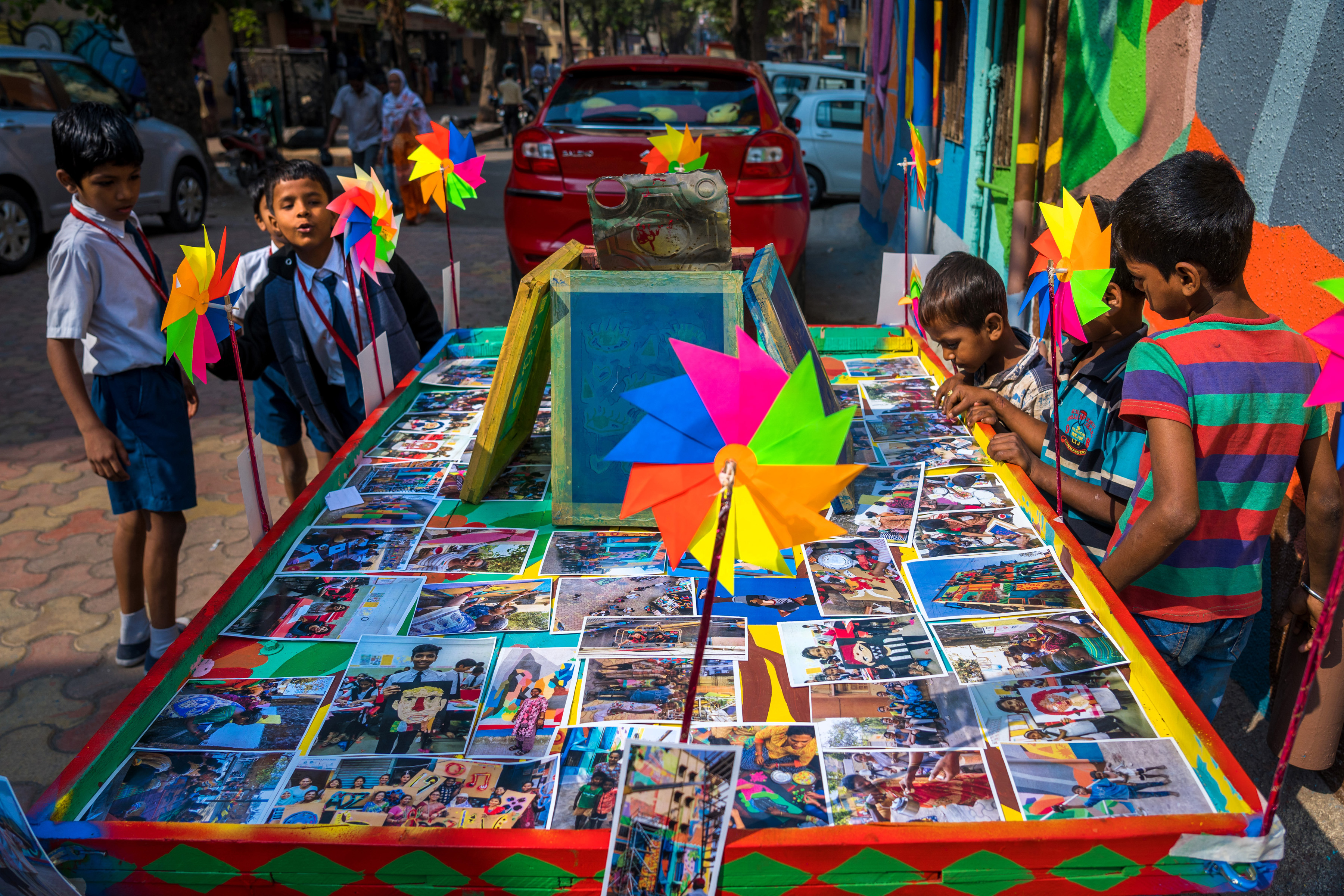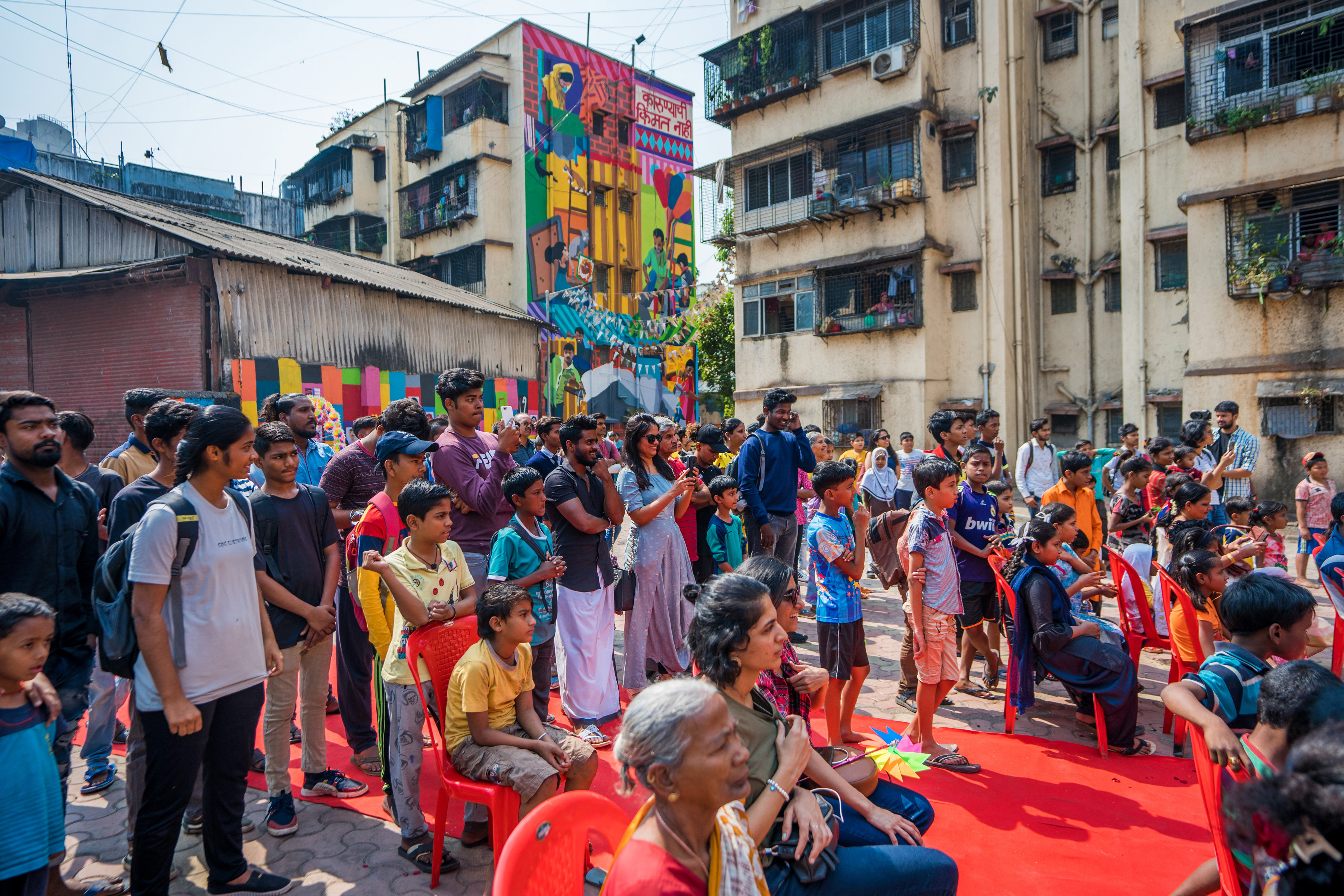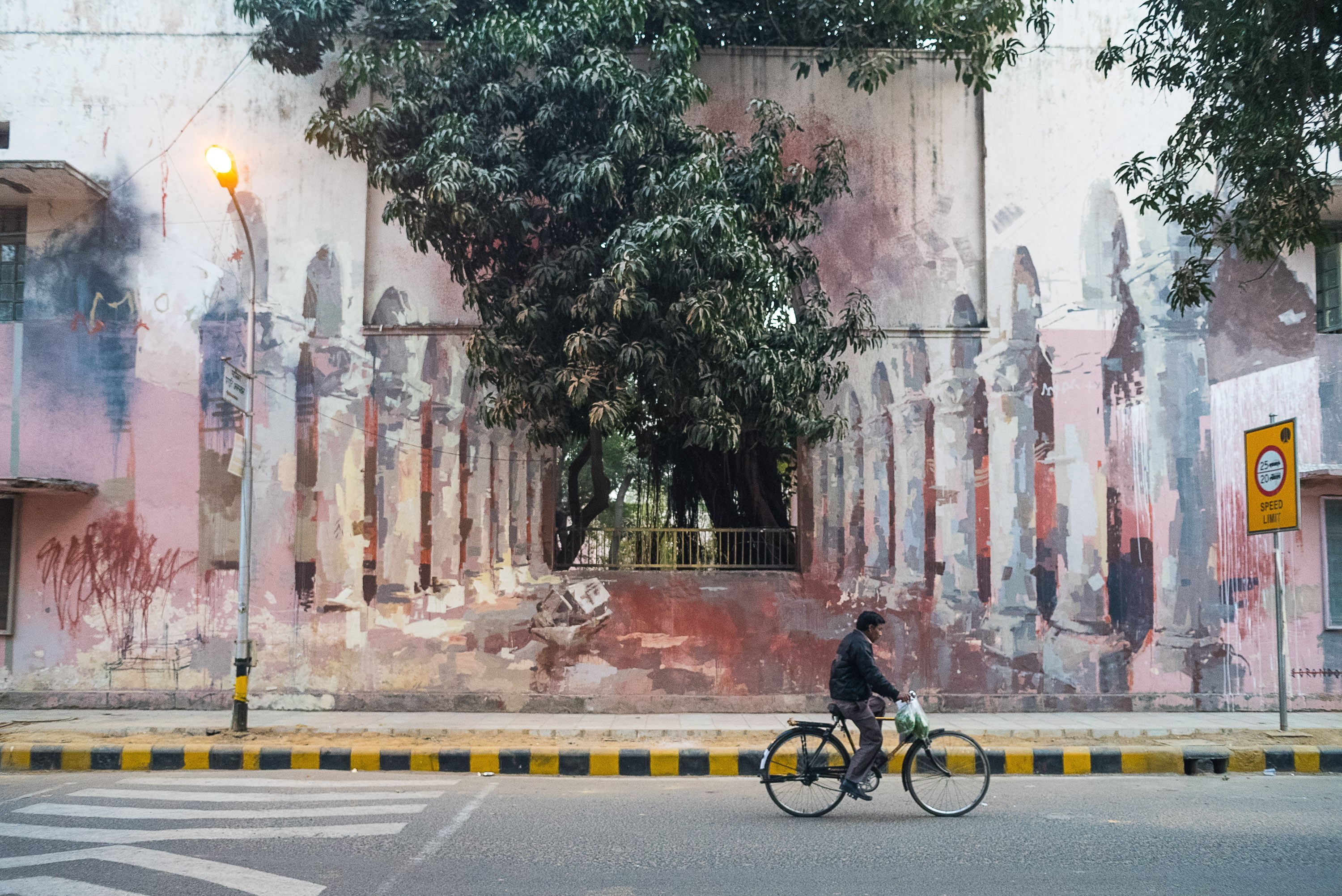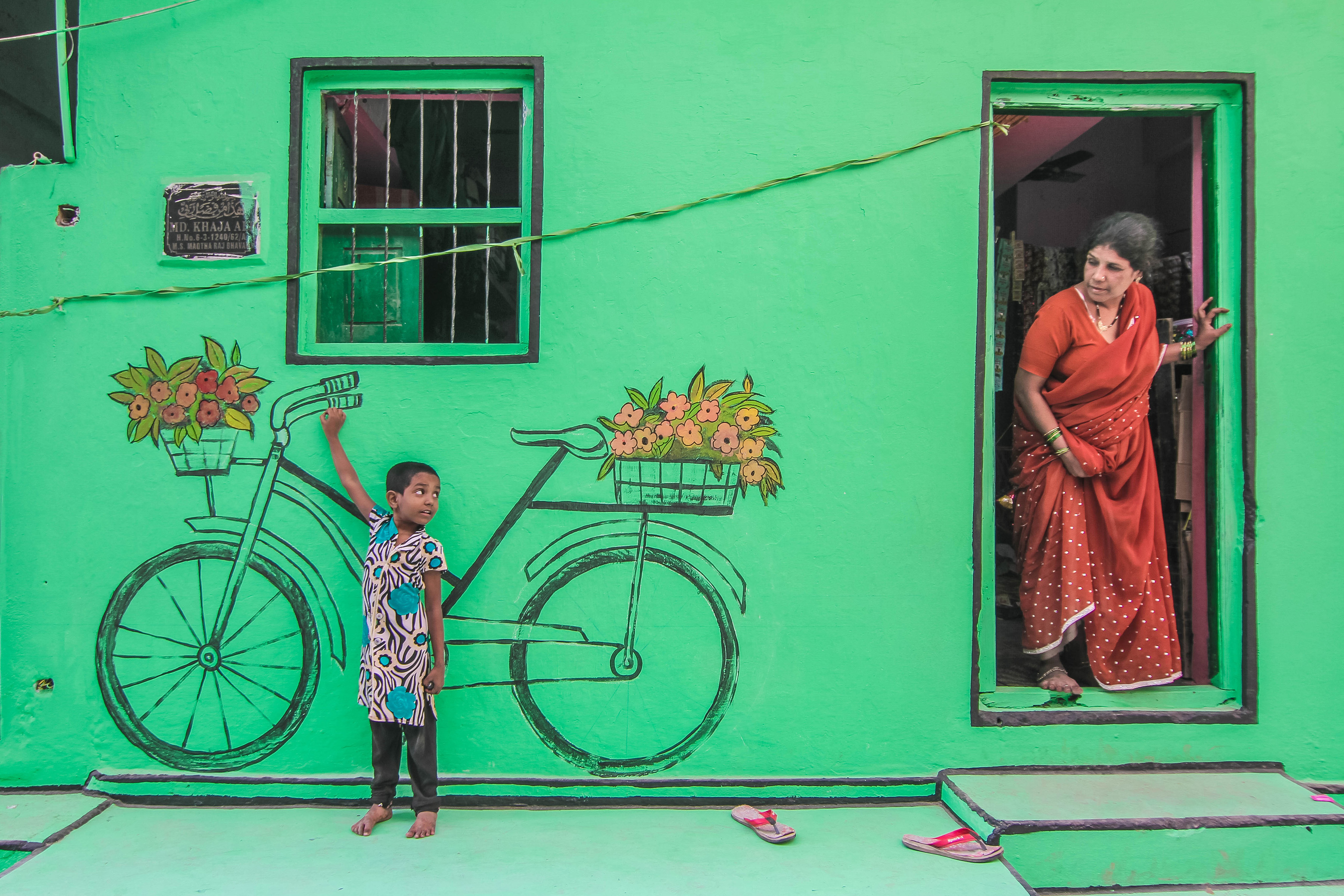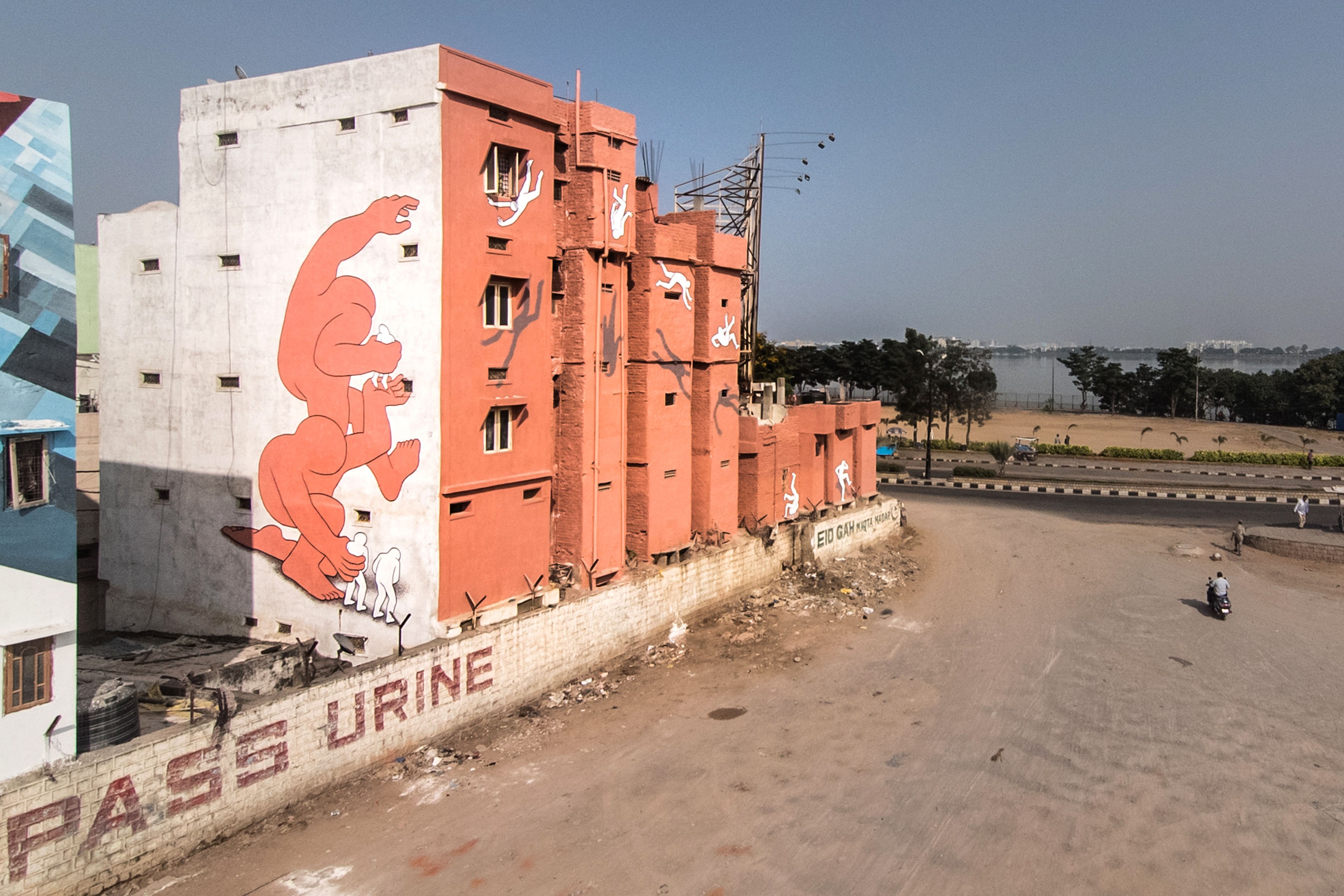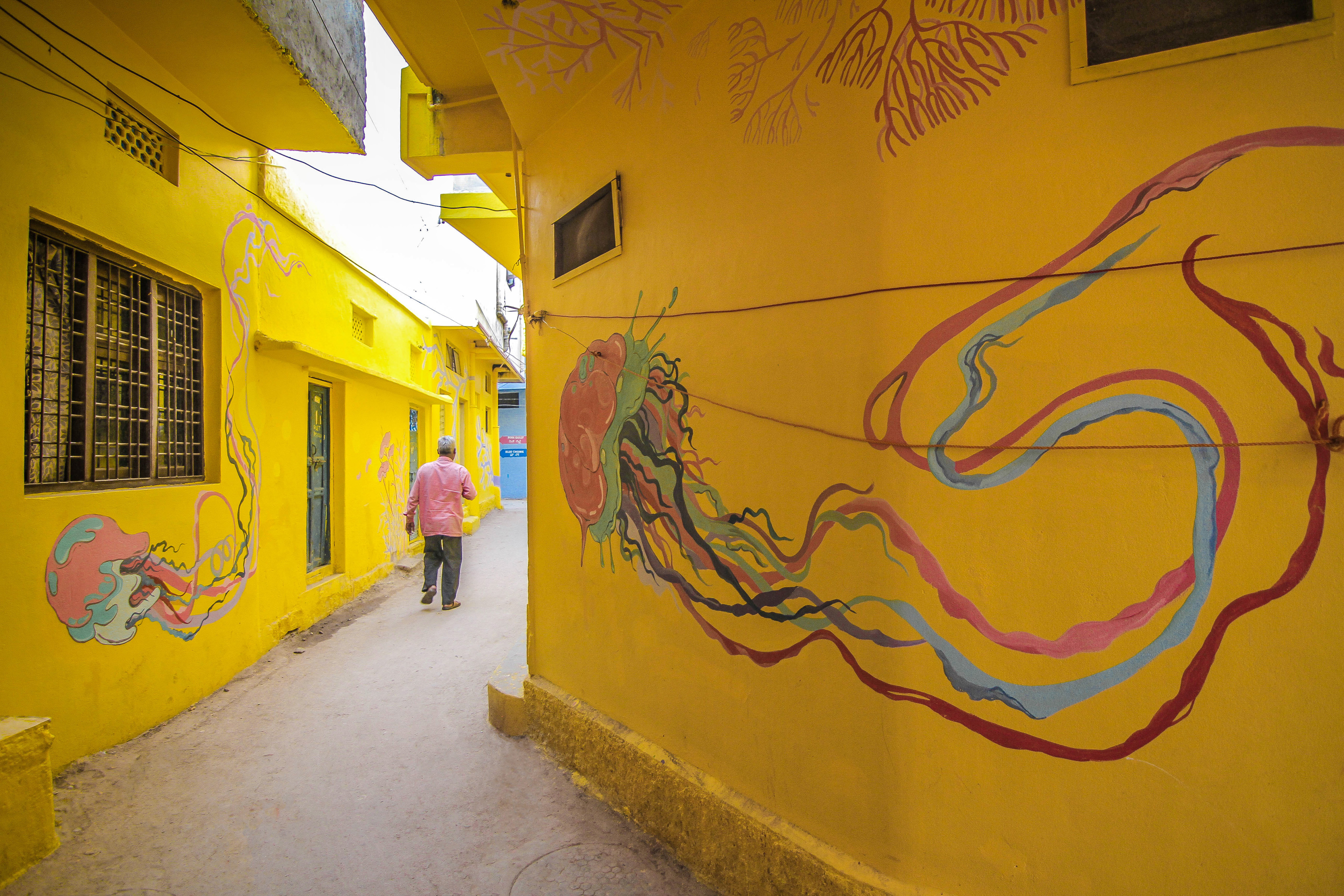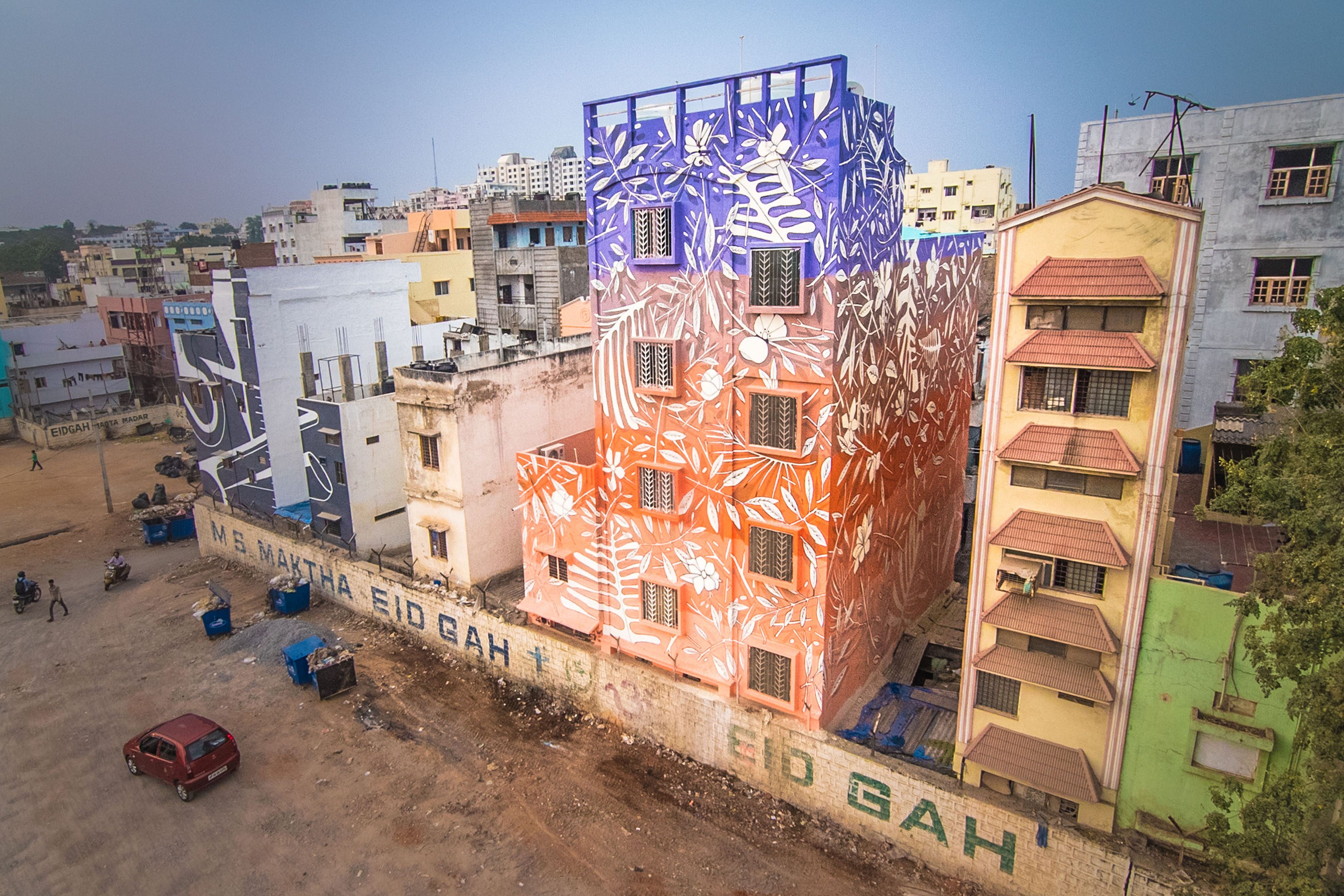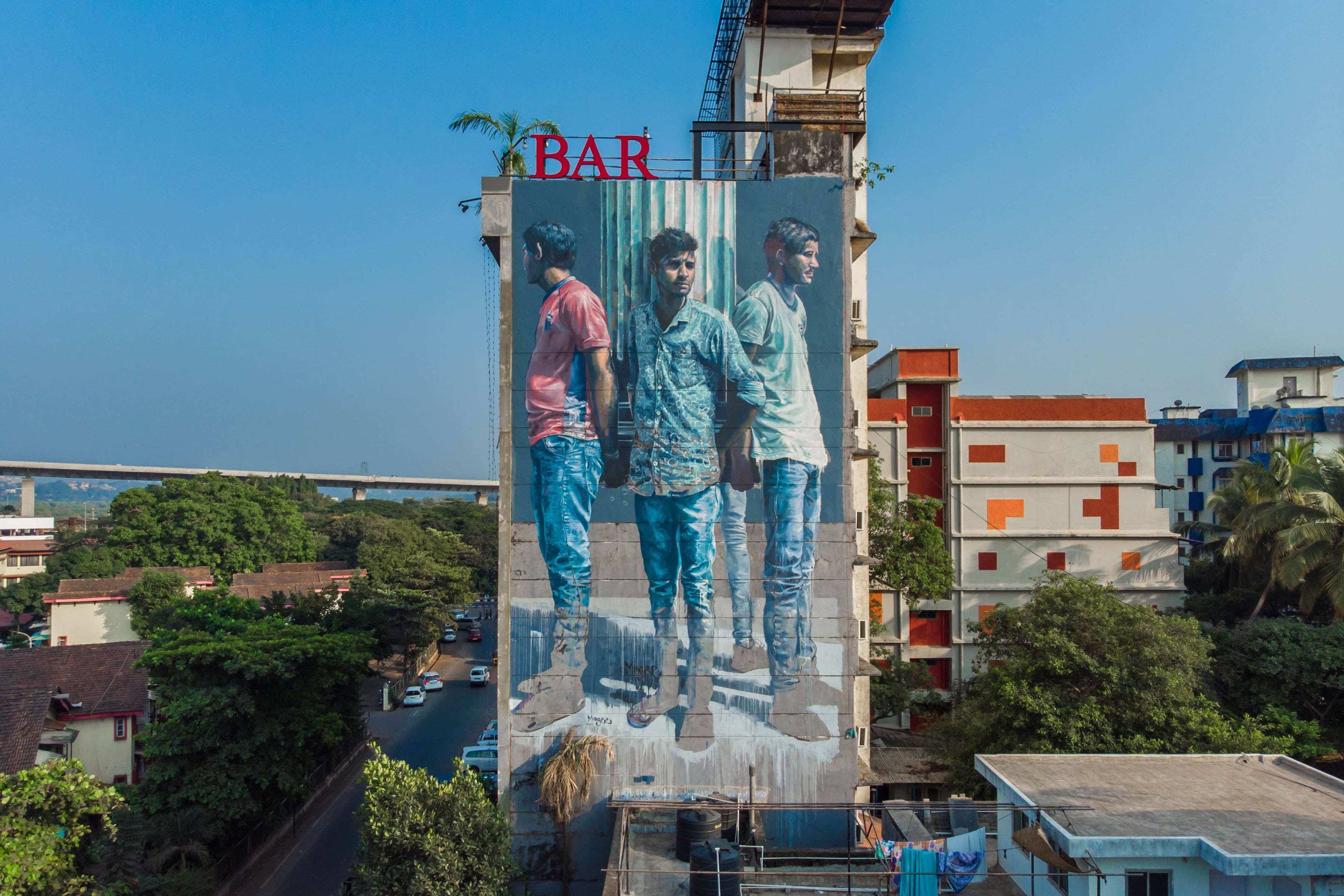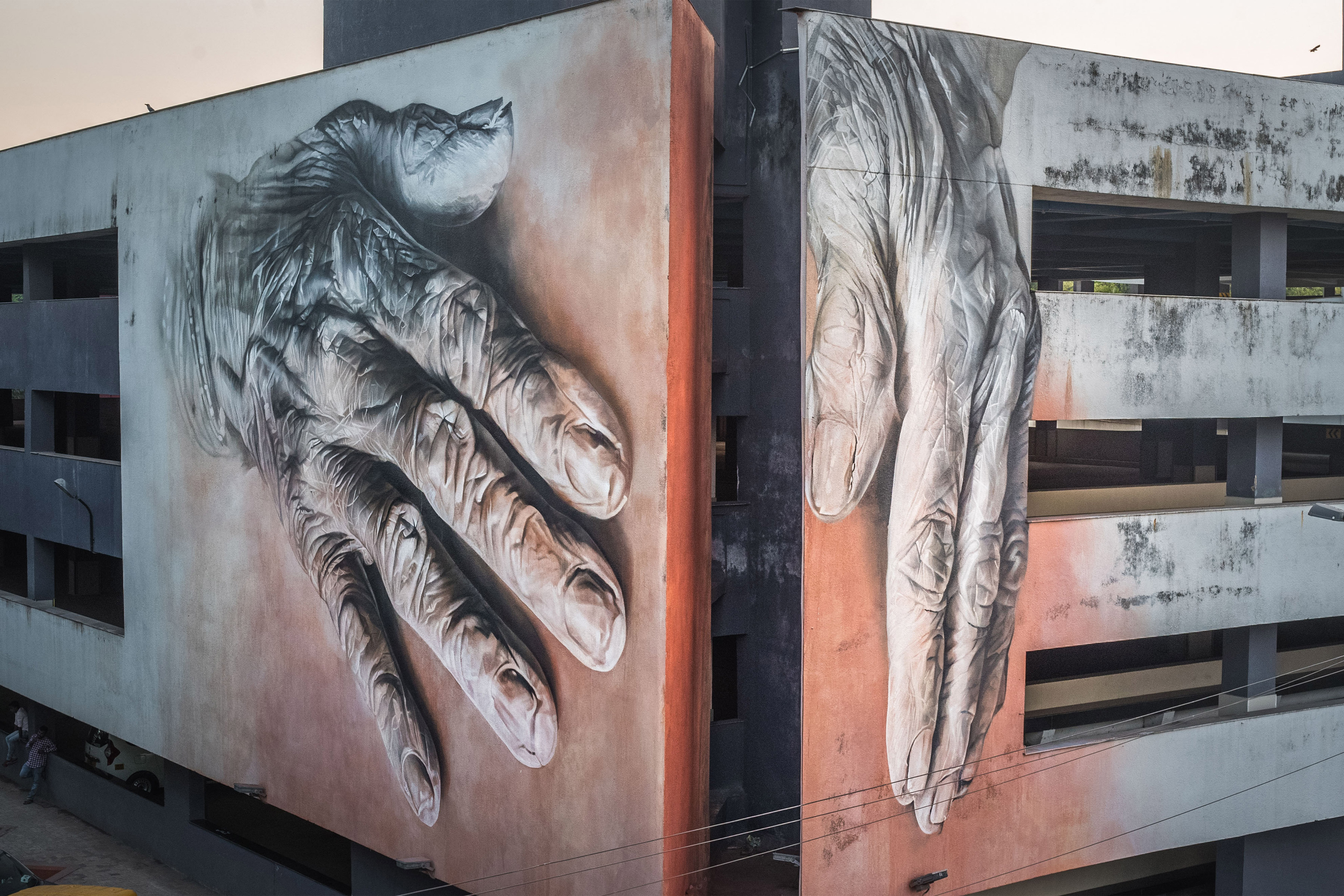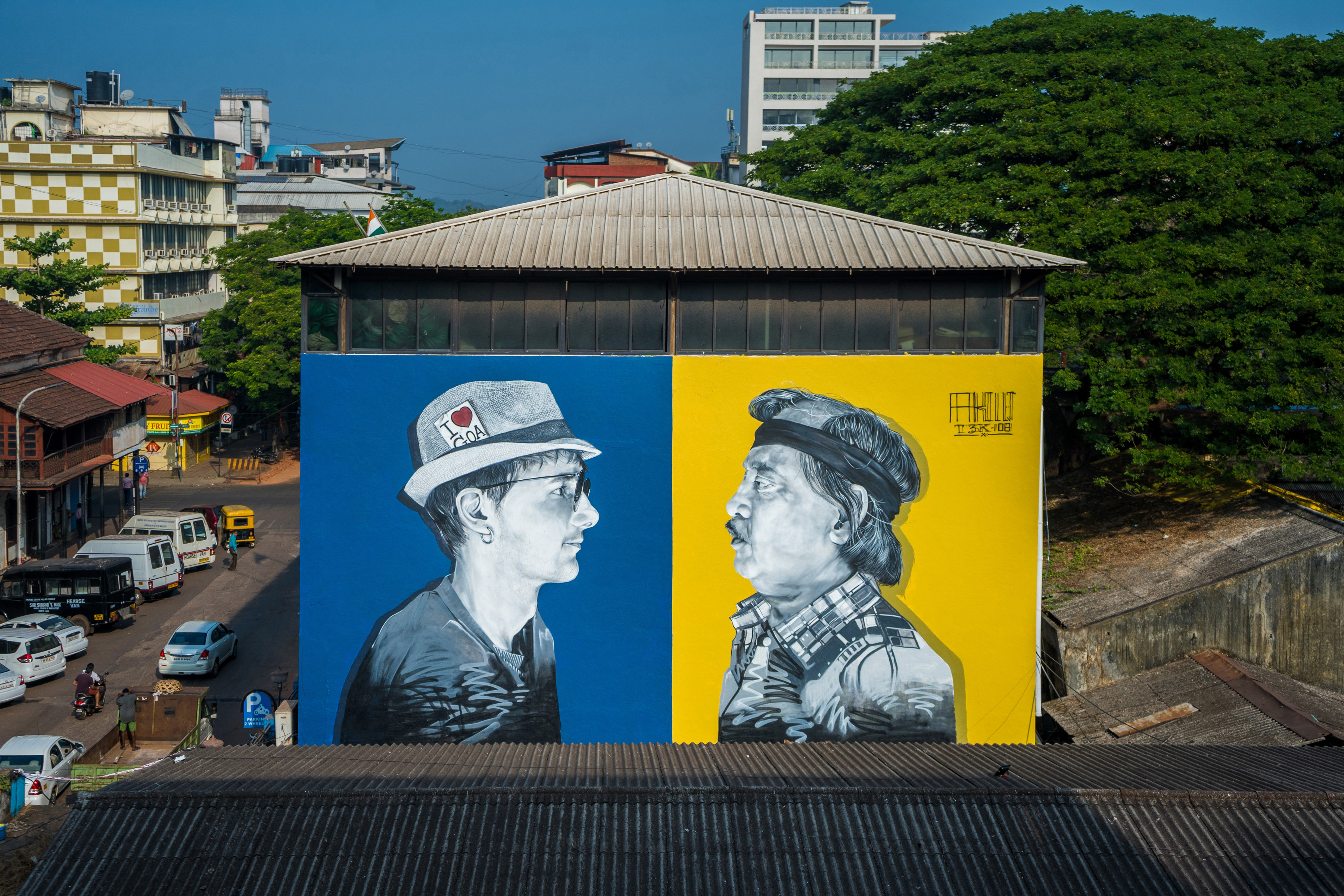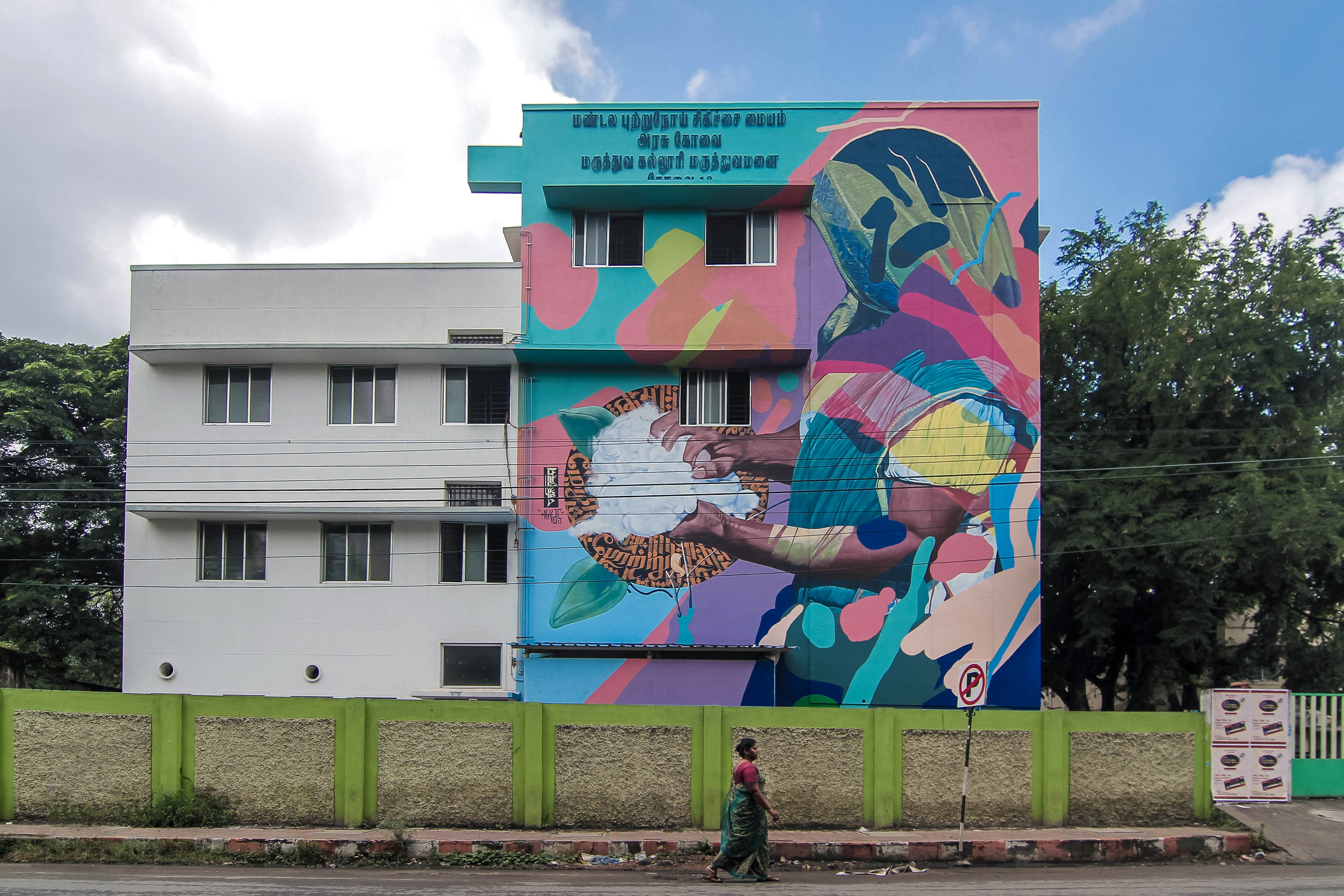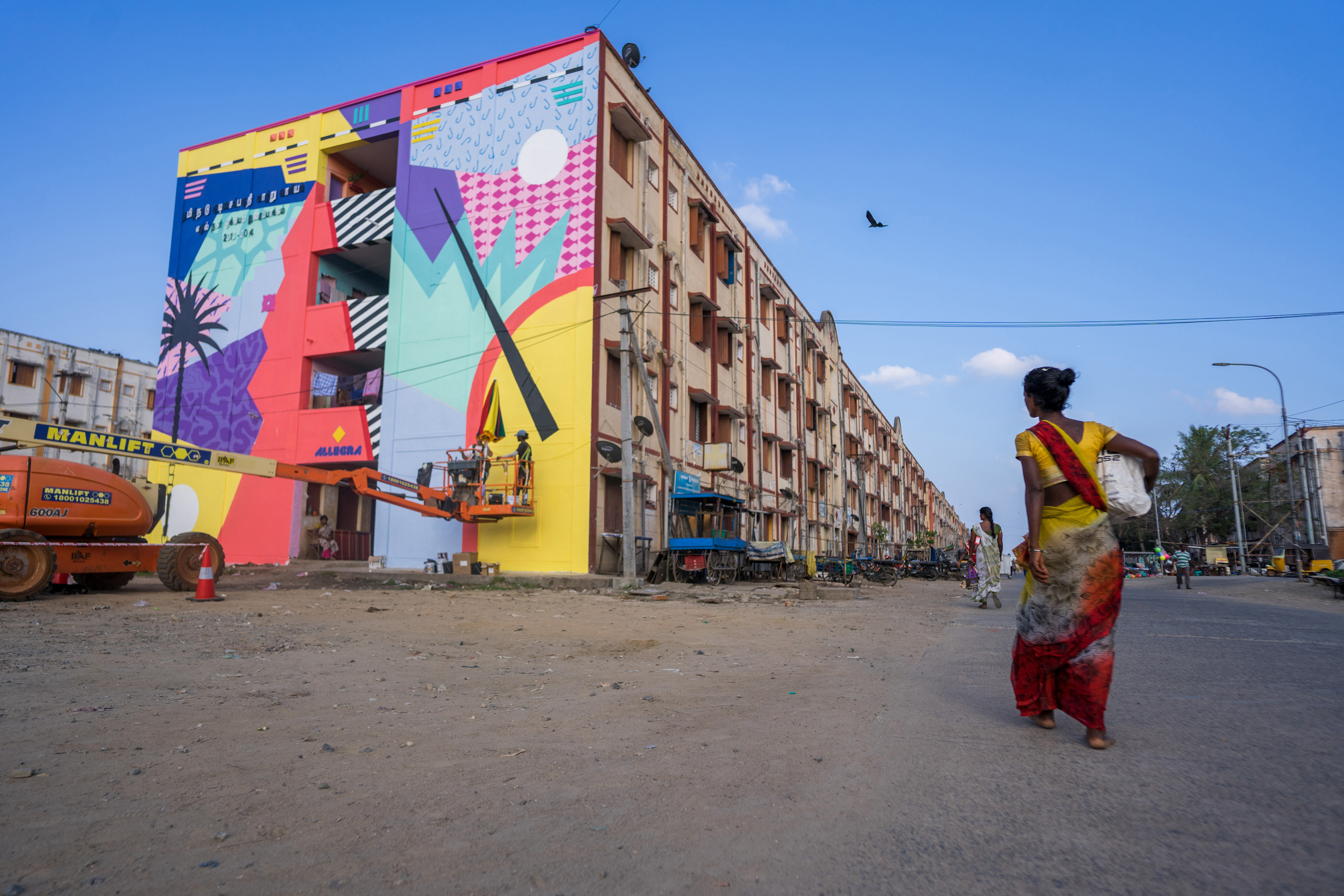Comprising Dharavi, Matunga Labour Camp, and Shahu Nagar, the region of Mahim (E) is commonly referred to as Dharavi only, one of the largest slums in the world. It is considered unsafe by most Mumbaikars, with a general apprehension at the mention of the area.
Outside the infamy often attached to the area, little do people know that apart from being an active centre of entrepreneurship, Mahim (E) is also the site for thriving leather, pottery, and recycling industries. The close-knit community of residents are multi-ethnic and multi-religious. The underground subcultures of hip-hop and b-boying have also shaped the region's identity.
Beginning in October 2017, we made Mahim (E) the setting for India’s third open-air public art district, after Lodhi in New Delhi and Maqtha in Hyderabad. The idea of an art district in the area played out with the objective of encouraging the city’s citizens, who generally might not venture into Shahu Nagar and Mahim (E), to discover the cultural milieu, and get a chance to engage with its residents.
The aim of St+art Mumbai 2017 was to connect modern areas of Mumbai that seemed distant from one another but shared the same origin. Artworks were curated with an aim to (re)introduce the area and its people to the city of Mumbai. By encouraging citizens to explore the area on their own, the creation of an art district in the neighbourhood sought to unhinge it from notions of perceived danger, and include it in the larger narrative of the city. Lineup artists for the festival spent time interacting with the local people, and these conversations found visual articulation in the artists’ works. 6 of them chose to employ the technique of portraiture to celebrate the region’s diversity.
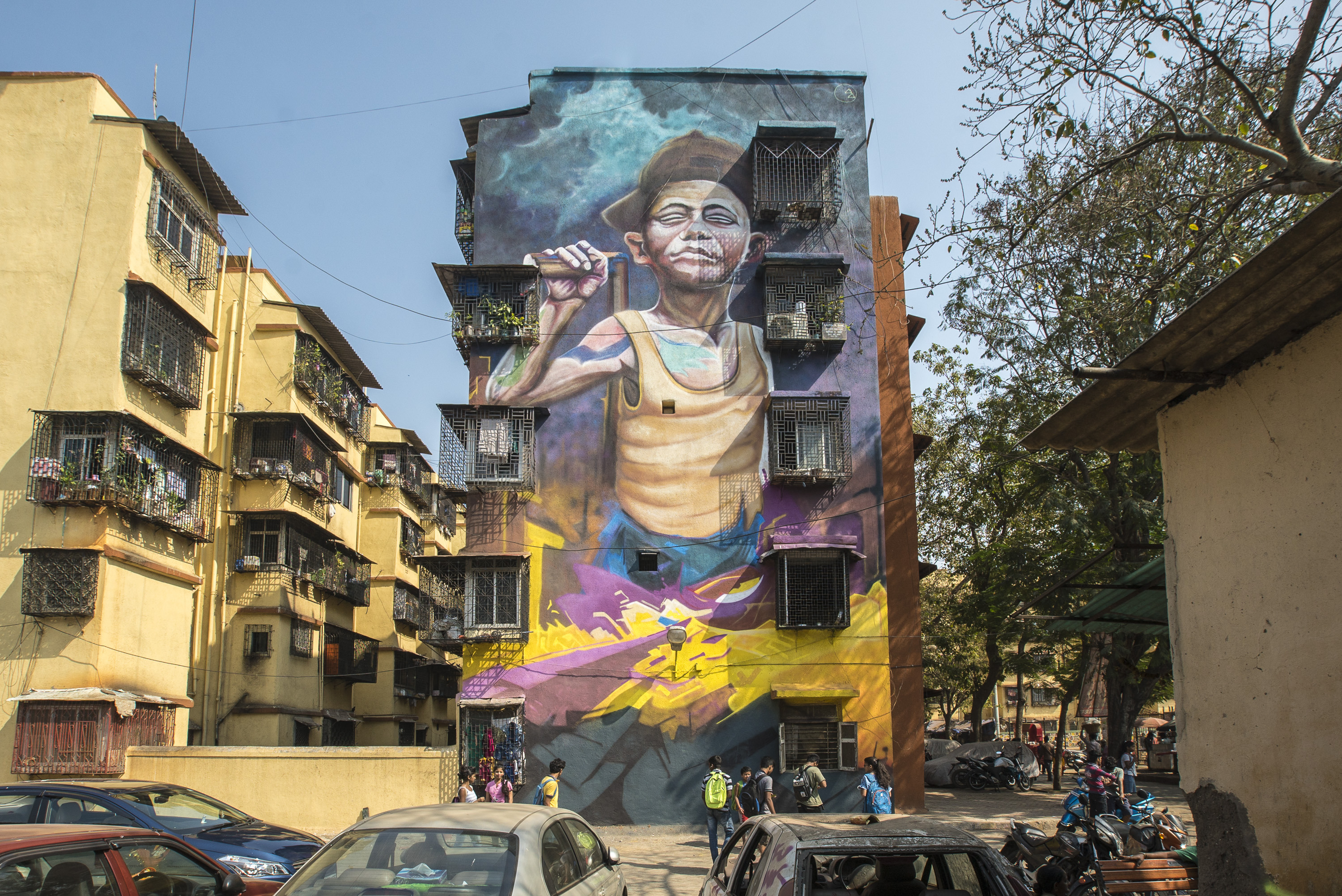
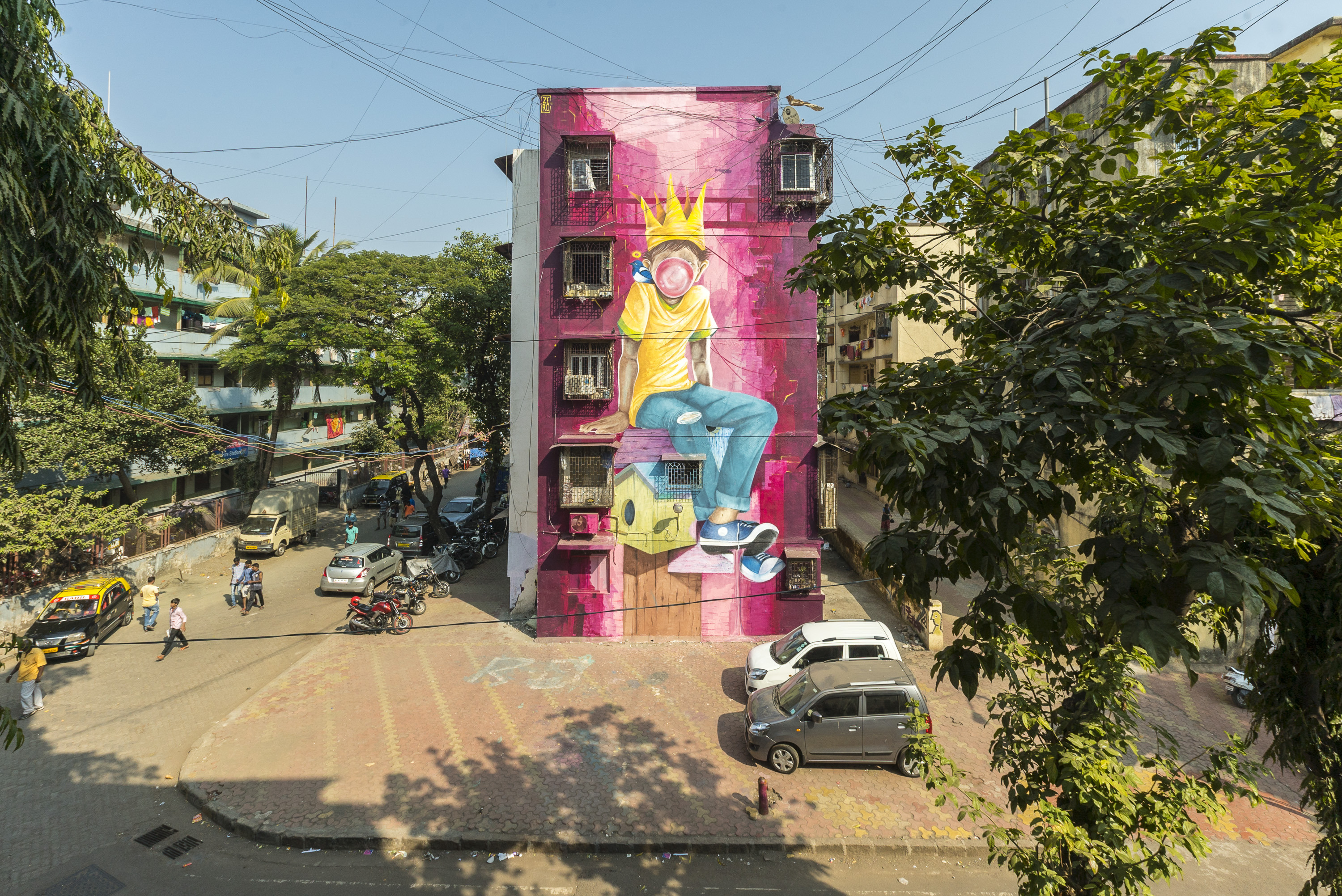
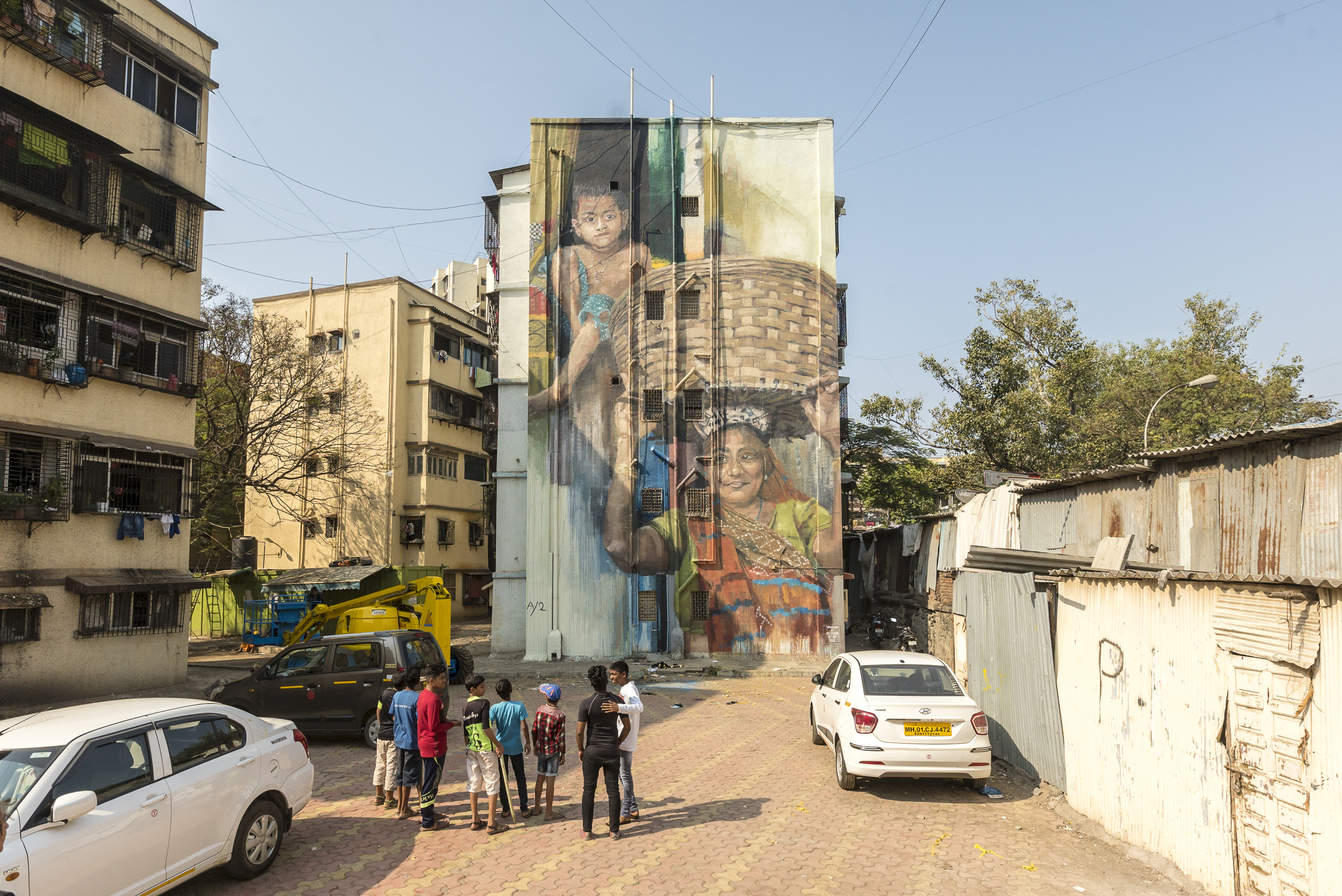
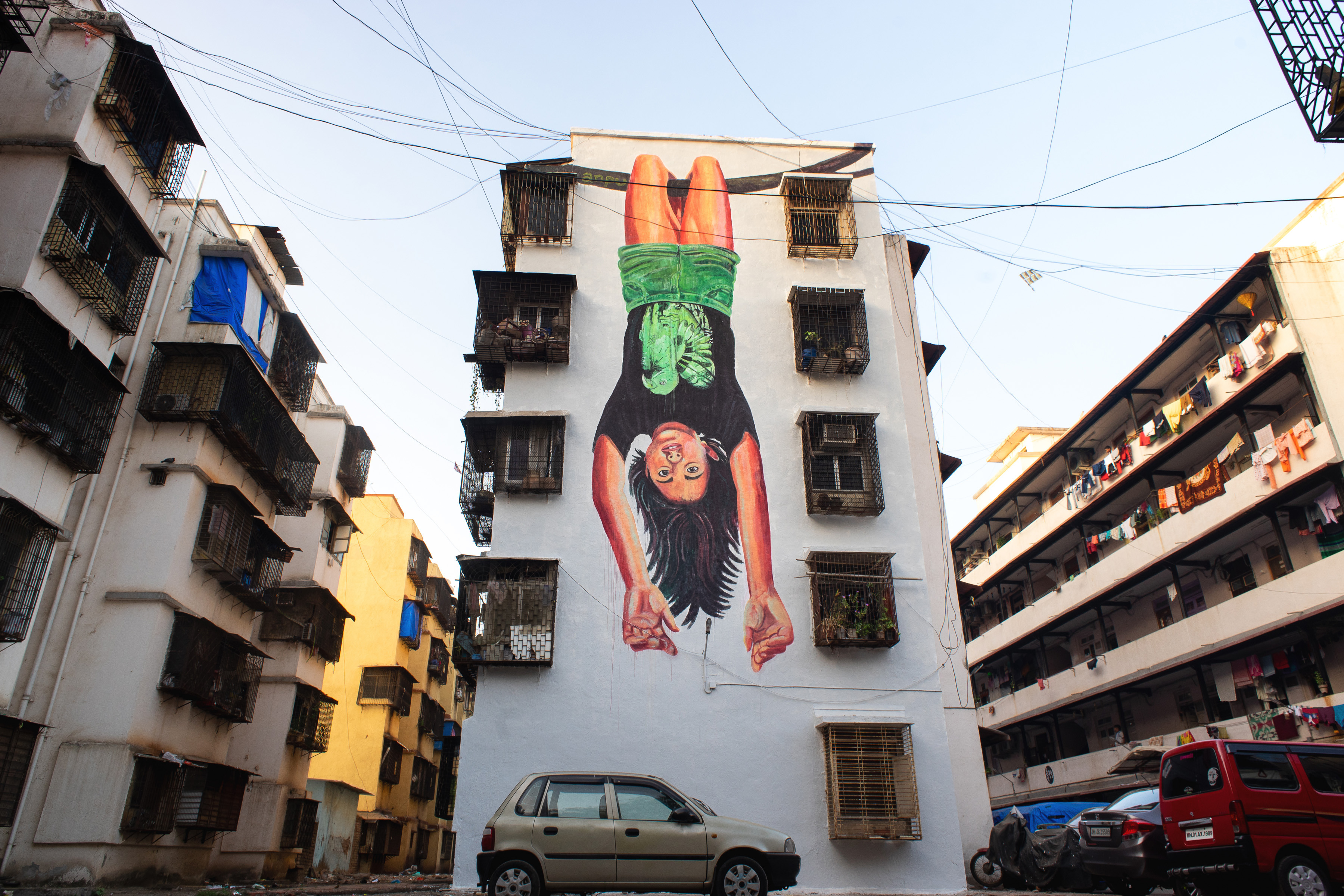
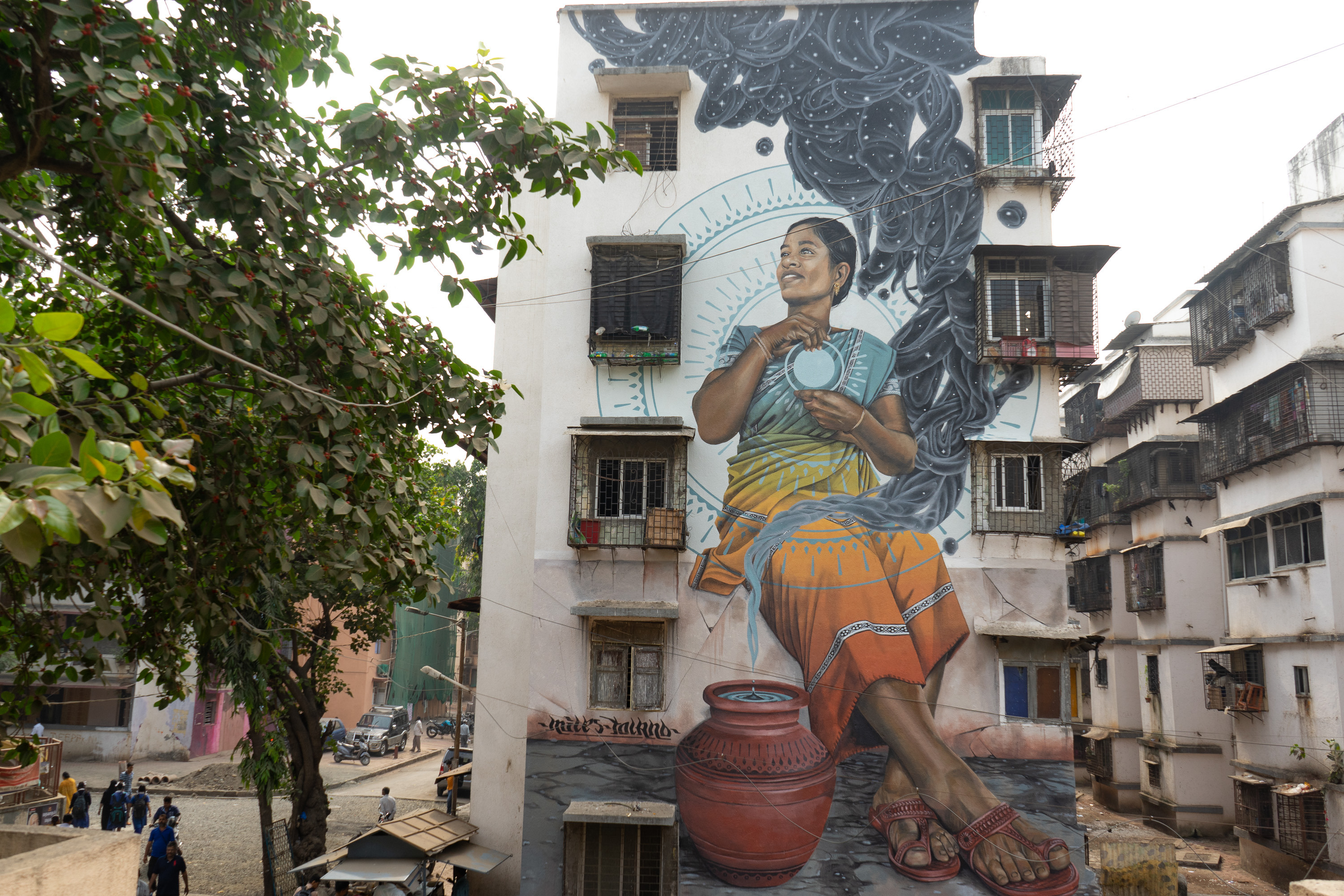

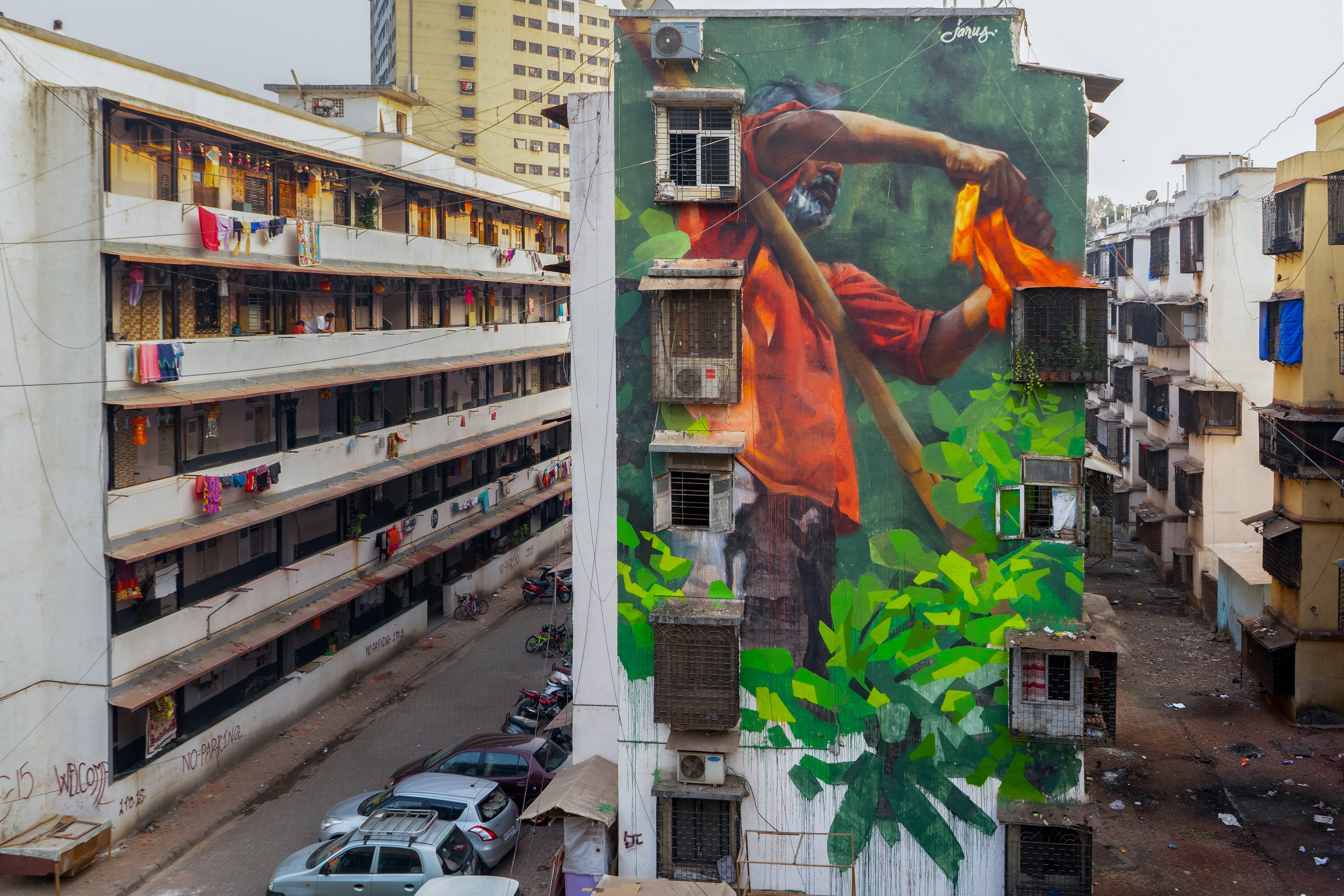
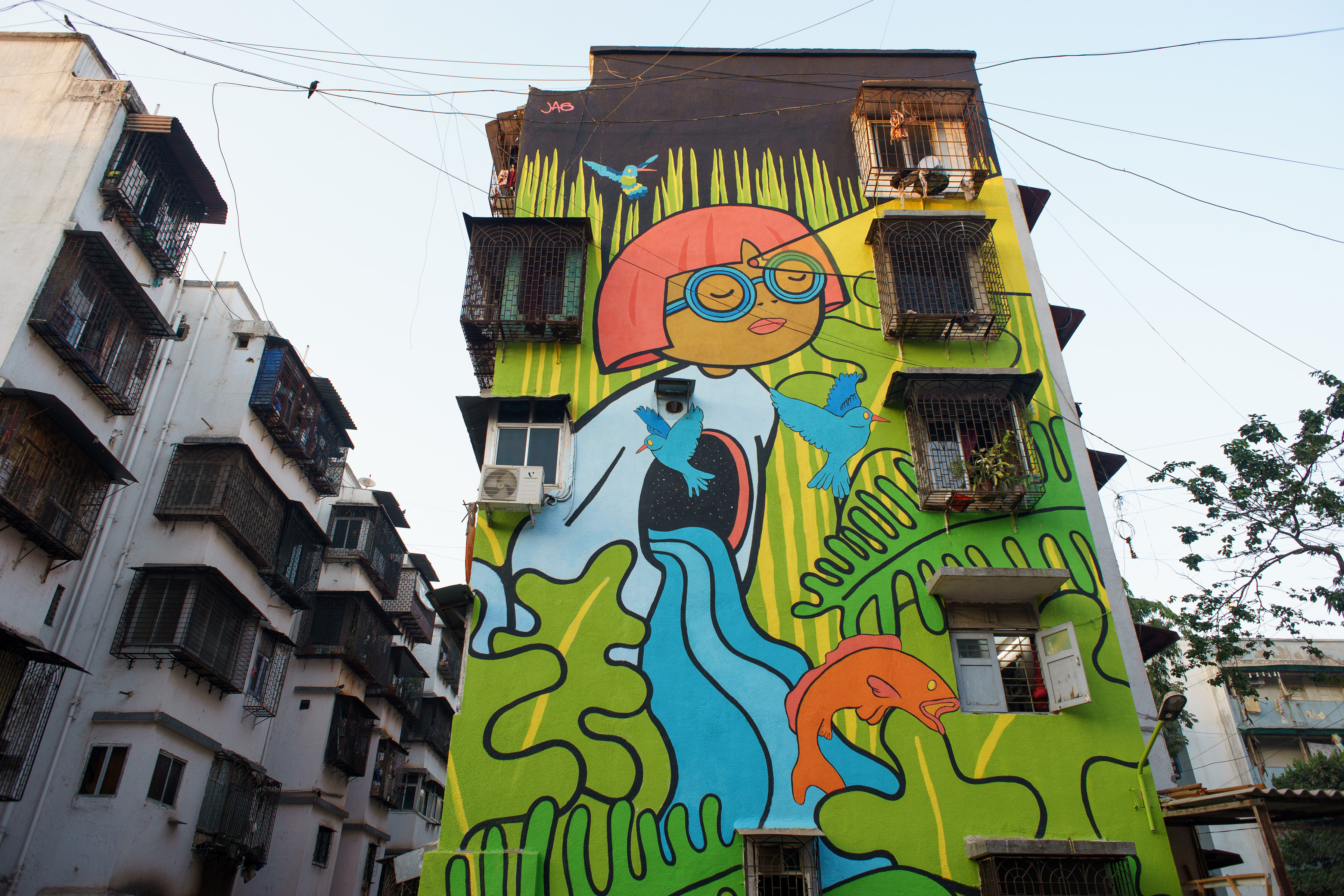
A densely-populated city like Mumbai is largely defined by its inhabitants. Mahim (E) is one of Mumbai’s most densely-populated areas. However, the stories of its residents have remained on the periphery, with the diversity of a significant portion of the city’s residents being clustered/forced in(to) a box. Today, most pieces in Mahim (E) Art District are inspired by local narratives, together telling its multifaceted story visually.
The stretch containing murals begins on facades located in Shahu Nagar, arriving at 60 Feet Road. The first artwork in the stretch is visible to the viewer right upon exiting the Mahim Railway Station - one that forms the gateway to enter Dharavi. Having a preliminary understanding of the geography and architecture of the neighbourhood from our first experience in the city gave us a map to conceptualise and organise the subsequent additions more effectively.
Spanish artist Elisa Capdevila’s mural in Shahu Nagar celebrates a local resident she interacted with on her first visit to the area. Her protagonist is a local woman who has lived in the neighbourhood for the last 15 years and resides in a house very close to the mural. Moved by her protagonist’s warmth, hospitality, and her ‘never say die' attitude despite trying circumstances, Elisa created this piece as a tribute not only to the daily resilience of her subject but also to the collective spirit of resilience of the people and women of Dharavi.
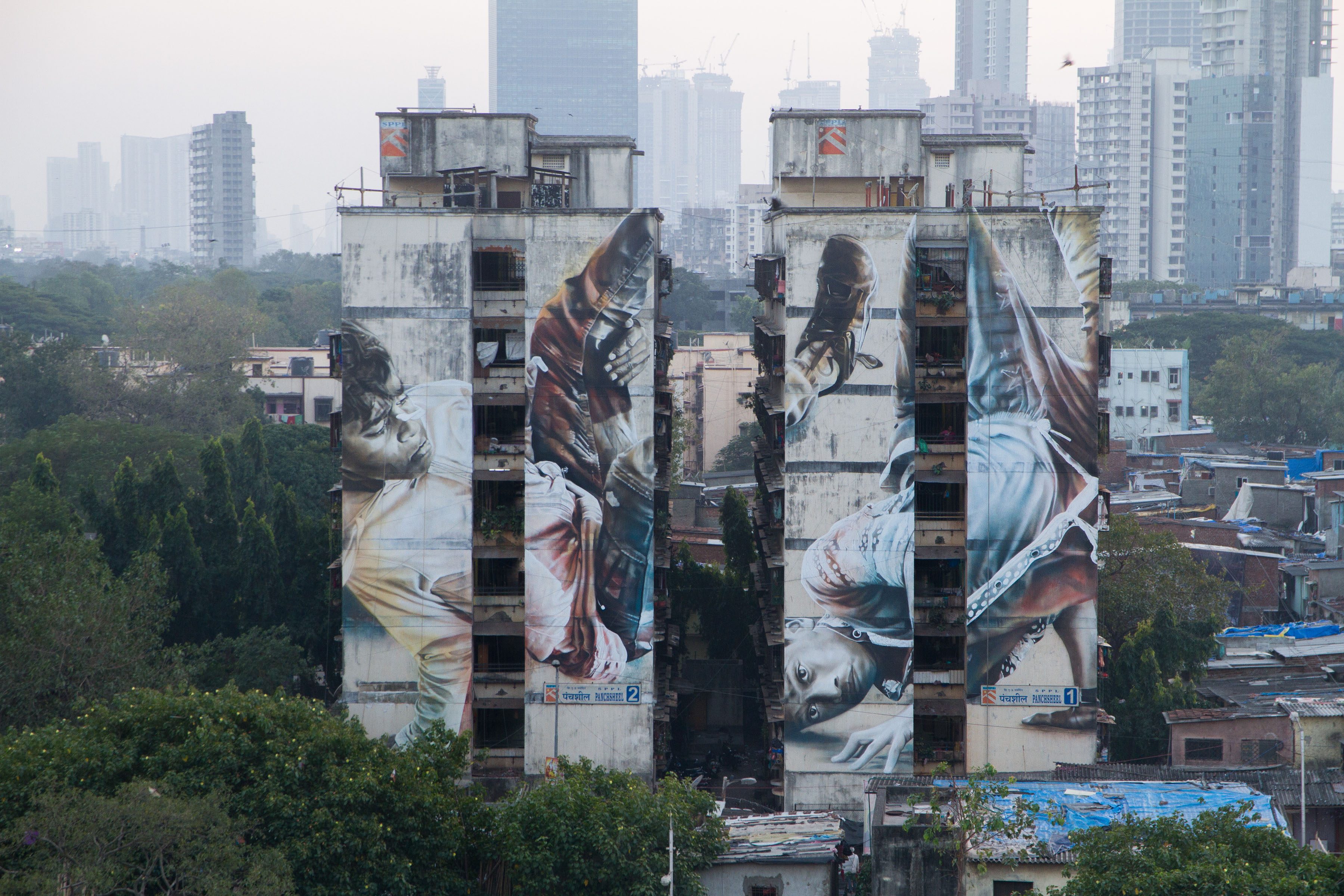
Project Me/We
One of the most crucial elements of the 2020 edition of the Mahim (E) Art District project was the special collaborative project between artist collective Aravani Art Project, Facebook AIR (Artist in Residence) and St+art India, titled ‘Me/We’.
Helmed by Aravani Art Project, ‘Me/We’ was made up of several elements - executed and simultaneously shaped over the course of four weeks across January and February 2020. While in the initial weeks artists from the collective facilitated a series of workshops for and with different communities of Shahu Nagar, the latter weeks of the project saw the creation of two vibrant murals in the Mahim (E) Art District.
Over the years, Aravani has created many large wall mural projects using a participatory approach in cities across the country, including many murals with St+art. The Bangalore-based art collective is known for using art as a means to shape safe spaces for the transgender community in India. Enabling the transgender community to adopt newer ways of reclaiming public spaces, ‘Me/We’, for the first time saw artists from the collective in the role of facilitators for three workshops, which independently explored the themes of kindness, interdependence and co-existence in the ‘megacity’ of Dharavi.
Complementing the ethos of the Facebook Artist-In-Residence program, which aims to build community through art, the mural aspect of the Project was largely informed by the collective’s on ground learnings from the workshops, and the aesthetic of Dharavi at large. It embodied the ideas of kindness, identity, solidarity and belongingness in a community and the visual for its design was arrived at using an interactive process and ultimately represented the different voices of Shahu Nagar.
“We want to create genuine friendships, intangible bonds and of course 'Art' in a seamless way along with our artist friends from the Transgender community. It's not about reclaiming space with a mural, rather encompassing all of its happenings, all day, every day. The project has left us yearning to know more about how something as delicate as human emotions are built over the strongest circumstances. Dharavi is a never-ending real-life novel.”
- Poornima Sukumar, co-founder, Aravani Art ProjectIn a celebratory affair between talks, performances, participative photo sessions and of course, the community, Project ‘Me/We’ was culminated with an official inauguration of the ‘Kindness Walls’. Through workshops, murals and a final launch event, the project aimed to speak with and sensitise people about the concepts of kindness, co-existence and inclusivity - seeking to truly use art as a tool for positive changes.
Workshop 1: ‘Self-identity within a community
The Me/We project began with an intensive workshop conducted in Shahu Nagar. The participants were the transwomen of the Aravani Art Project and women of SNEHA Foundation, an NGO based in Dharavi that, provides awareness and access to healthcare to victims of domestic violence.
In the first sharing session, the 20 participants shared their stories where the idea of the community came out as a strong, uniform theme. They spoke about how important being in a community was to them and how it, had helped them overcome difficult situations.
To begin the art intervention, they were asked to identify an everyday object that was synonymous to themselves and therefore used as an identifier. These objects were then drawn and painted and then translated into a stencil. This activity allowed the participants to do large-scale drawings while understanding the stencil's technique. Then they sprayed painted these symbols in different parts of Shahu Nagar, leaving their identities across Dharavi.
The workshop also explored the basics of wall painting, beginning with the creation of the community mural, as, an extension to the final two walls.
Workshop 2 – 'Gender roles and self-esteem'
This 3 day workshop was conducted in Sant Kakkya Marg School, Dharavi. The participants were students of the 8th grade. It was facilitated by women of Kranti, an organization for survivors and families of sex workers in one of Mumbai's biggest prostitution areas. The workshop focused on the idea of self and self image for an age where change is a constant.
After a brief ice breaking session, the students were asked to draw how they see themselves. To challenge general portraiture, they were asked to complete their portraits using cloth strips, collected from around, Dharavi. This gave them the opportunity to create a visual identity for themselves using prints, textures and colours, elements that belong to their daily visuals and environment in view to reconcile with it as well as stimulating a sense of belonging. The transwomen from Aravani, were part of the process facilitating the activity in a 360° integration.
The final portraits were displayed alongside the objects symbols of Workshop 1 on the community wall in Shahu Nagar.
Workshop 3 – ‘Everyday Dharavi’
This workshop served as a public art activation space, where the open-to-all format of the workshop allowed for the general public/passer by of Shahu Nagar to interact with the artists of Aravani and short, art and craft interventions. This workshop also served as a conversation tool to build the composition for the final artworks of the murals.
The workshops were tailored to suit different age groups, with a younger audience doing activities like colouring, drawing and making paper collages and pinwheels. The older people experimented with activities like screen printing and story-telling.
The art activities also acted as a tool to build a conversation with people about their ideas of kindness and empathy and how they lived and functioned as a community in Dharavi. The main questions asked were “What are acts of kindness that have impacted you, what acts of kindness do you wish to see, and what do you like about living in Dharavi”,
These stories were collected on postcards and artworks were added to the stories in drawing sessions with the kids.
The Kindness Walls, by Aravani Art Project
The twin murals, located at the Dharavi-Shahu Nagar passageway, are made up of several elements which depict small moments of kindness one encounters in a close-knit community setting - like a conversation shared across windows, a friendly smile while rushing for work, lazing dogs, balloon sellers, and swinging down a basket for time management amongst others. Largely inspired by visuals the collective observed in Dharavi, the murals also contribute to the founding ethos of the Mahim (E) Art District, which since its beginning in 2014 has focused on celebrating the numerous facets that characterize the area and its lifeline – its people.
Celebration Day - 8th February
Celebration Day included a panel discussion led by Sadhna Prasad, Co-founder of the Aravani Art Project on topics of community-living and creating art in public spaces, poetry performances by gender-free arts organisation Anat Speaks, performances by beatboxers and rappers Rahul, Nexus and Paul, creating a perfect celebration of street culture and the Me/We project. Trans women from the collective, also performed a 'laavani' dance performance, as well as a very special ‘Koli dance’ performance on Inauguration Day. The event ended with a collective photo session against the backdrop of the Kindness Walls, with the honourable Ms Varsha Gaikwad, Cabinet Minister, Maharashtra, who had also graced the celebration with her presence.
